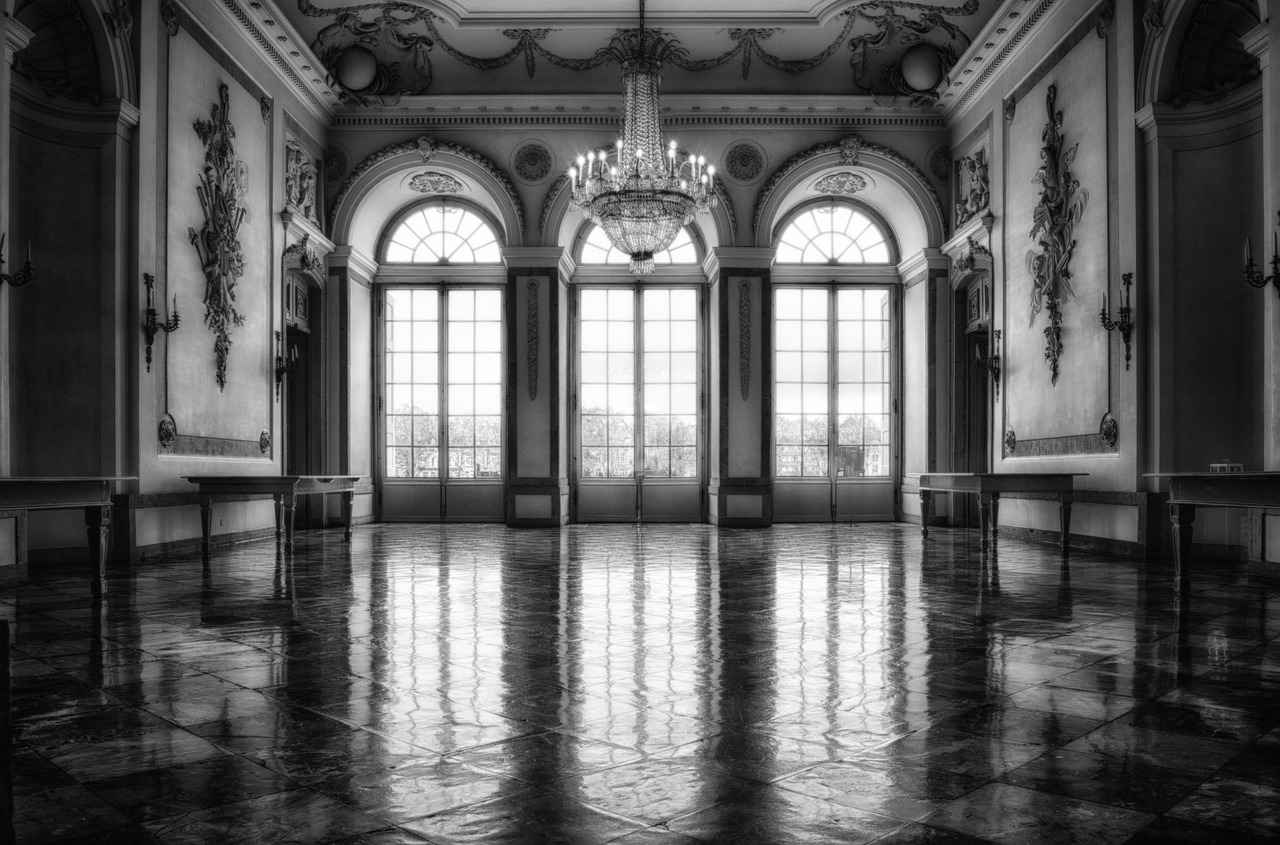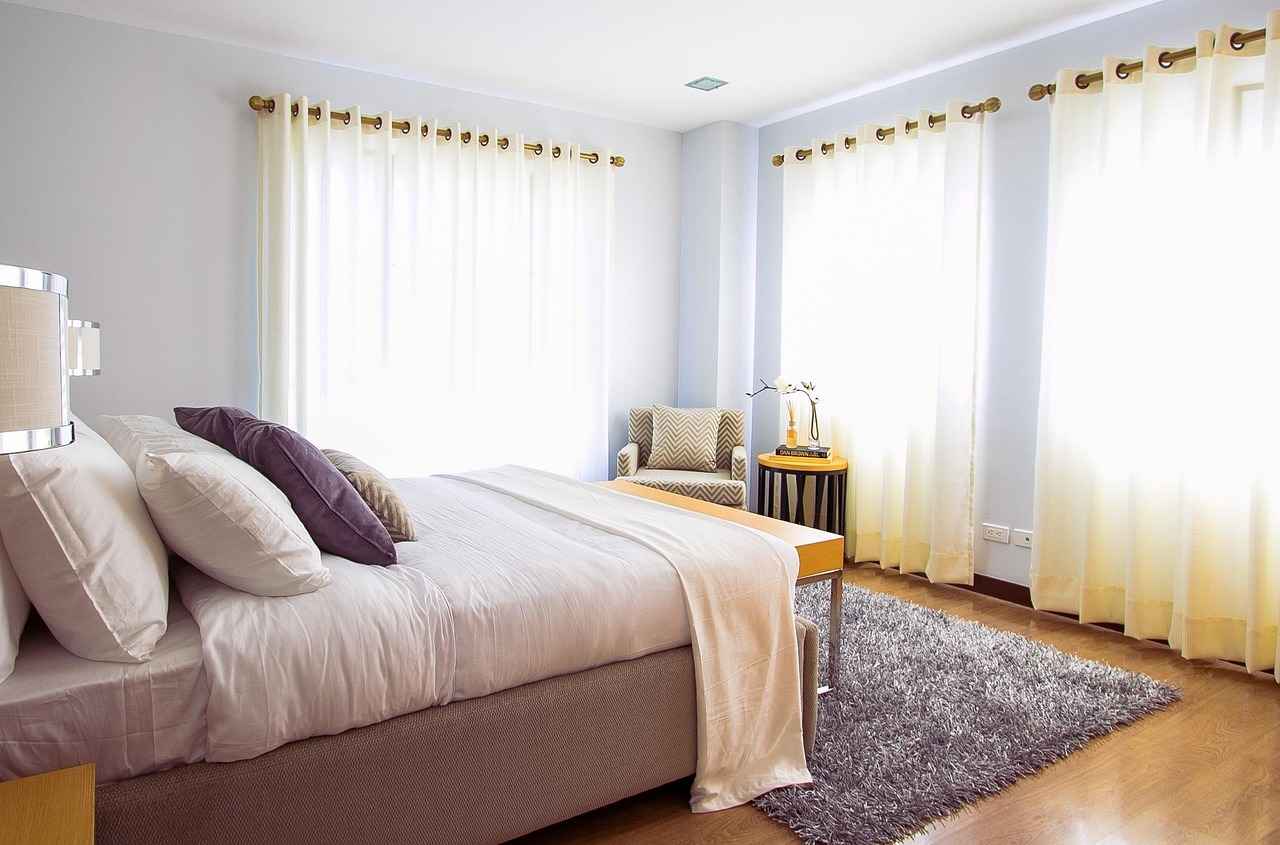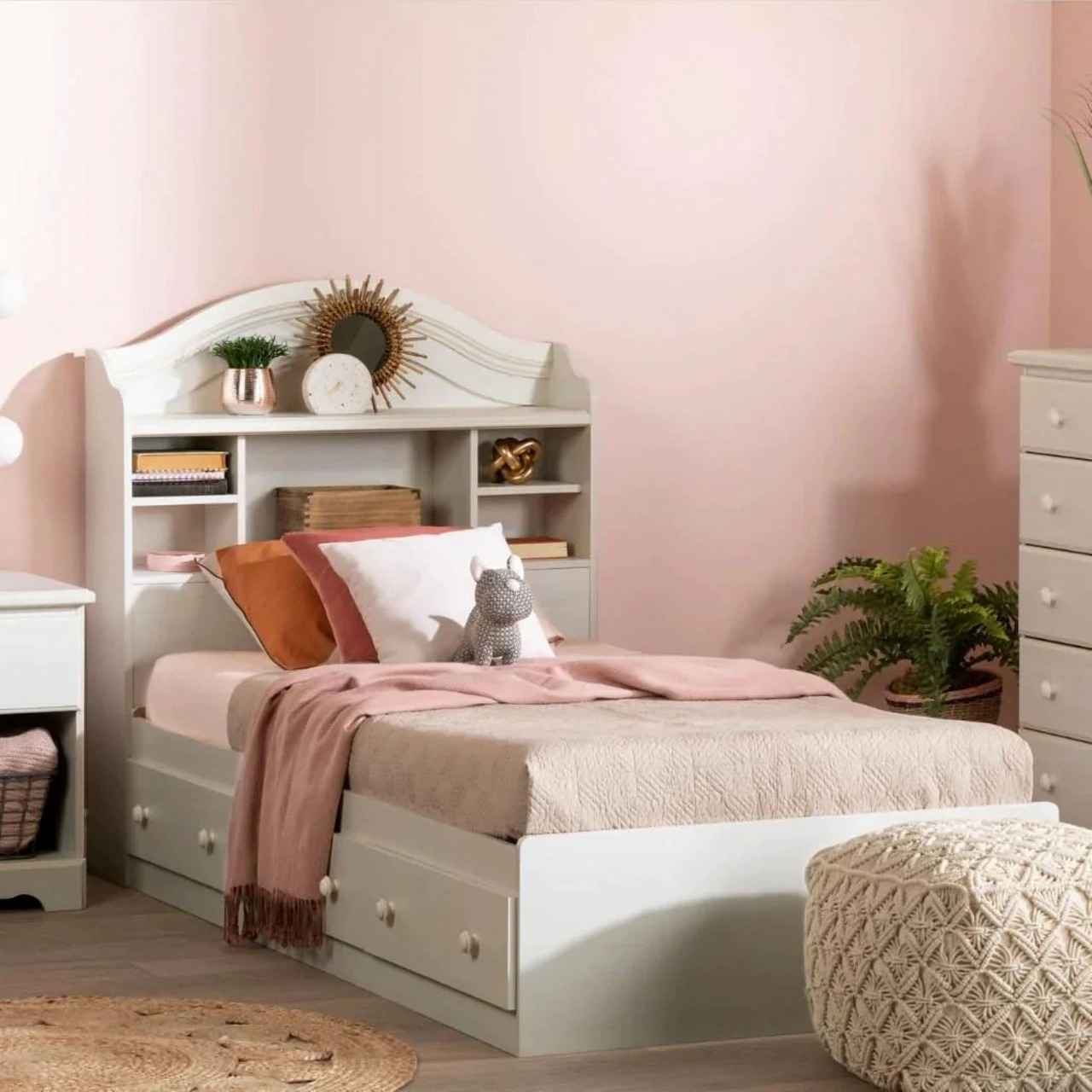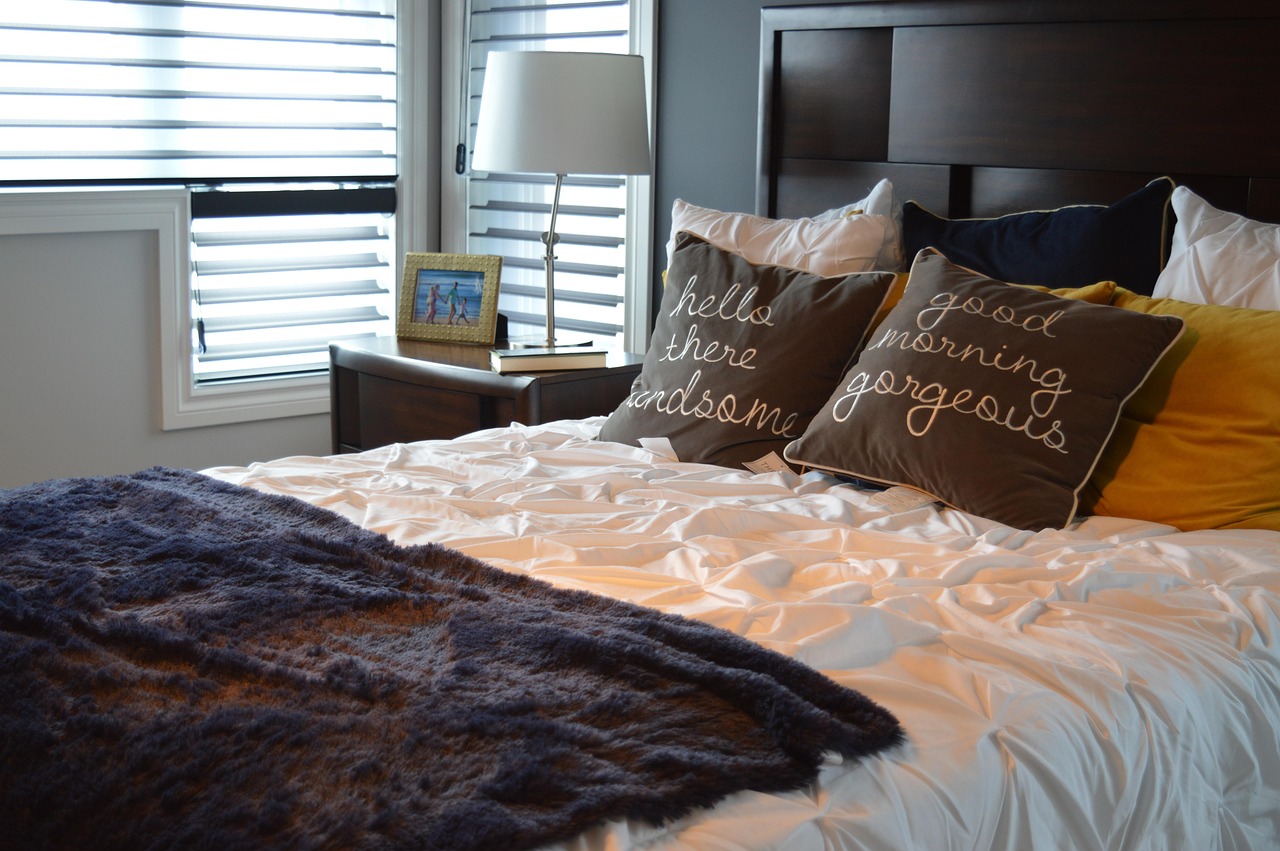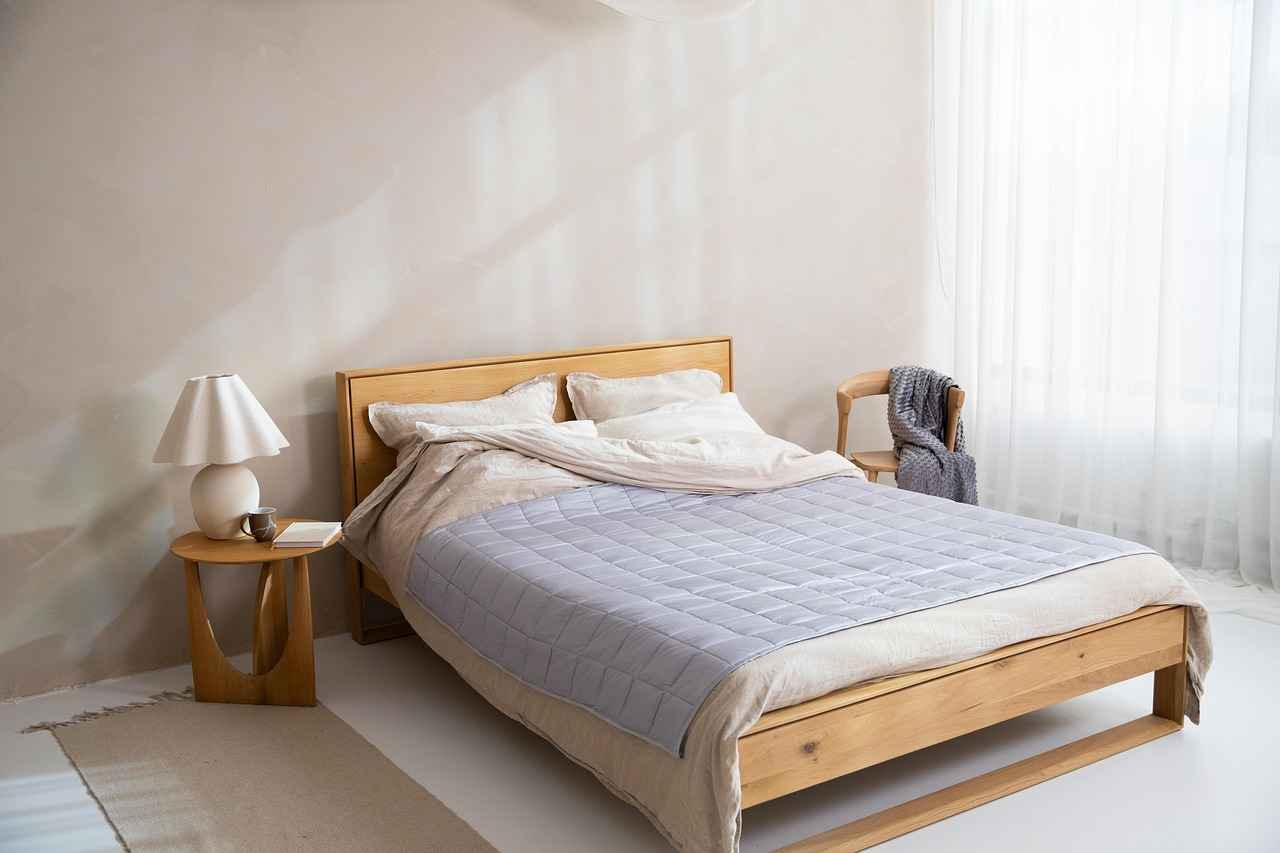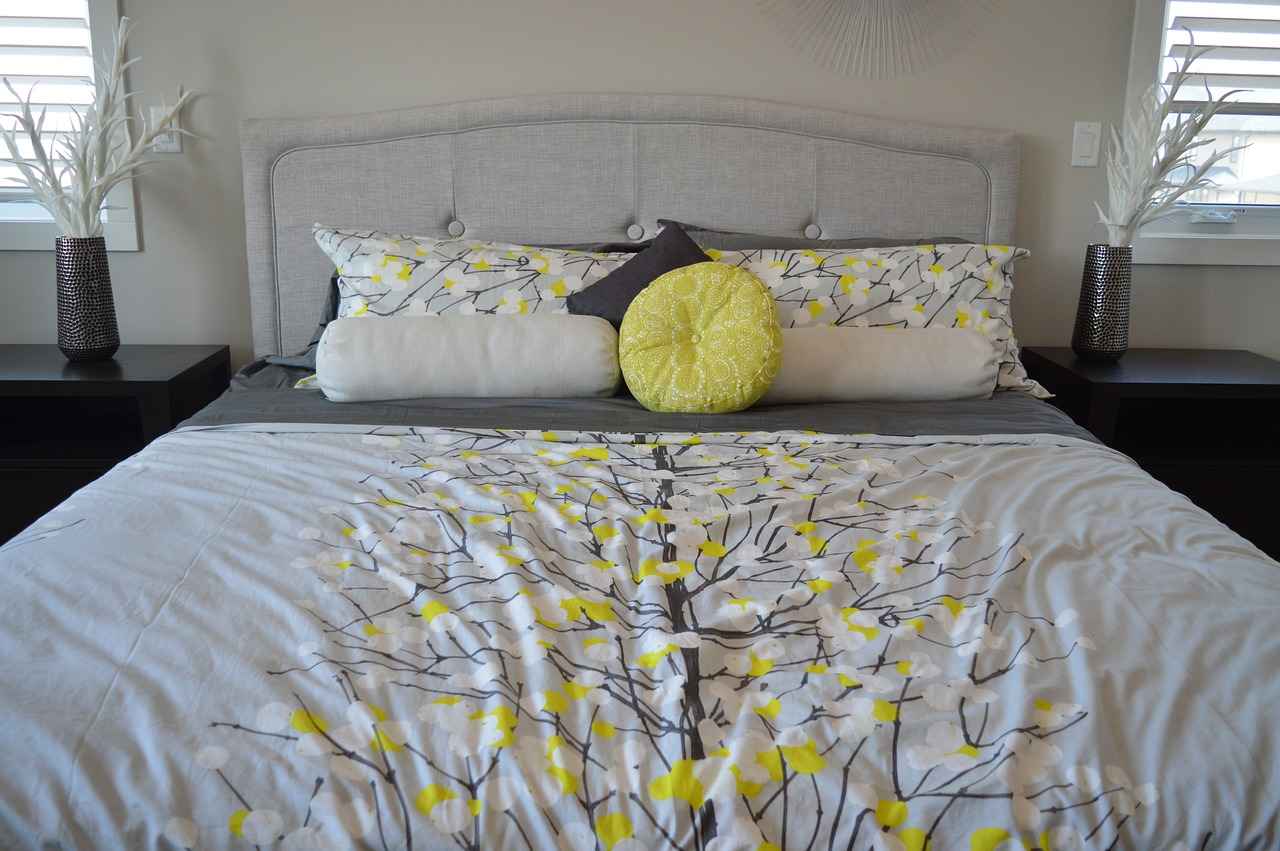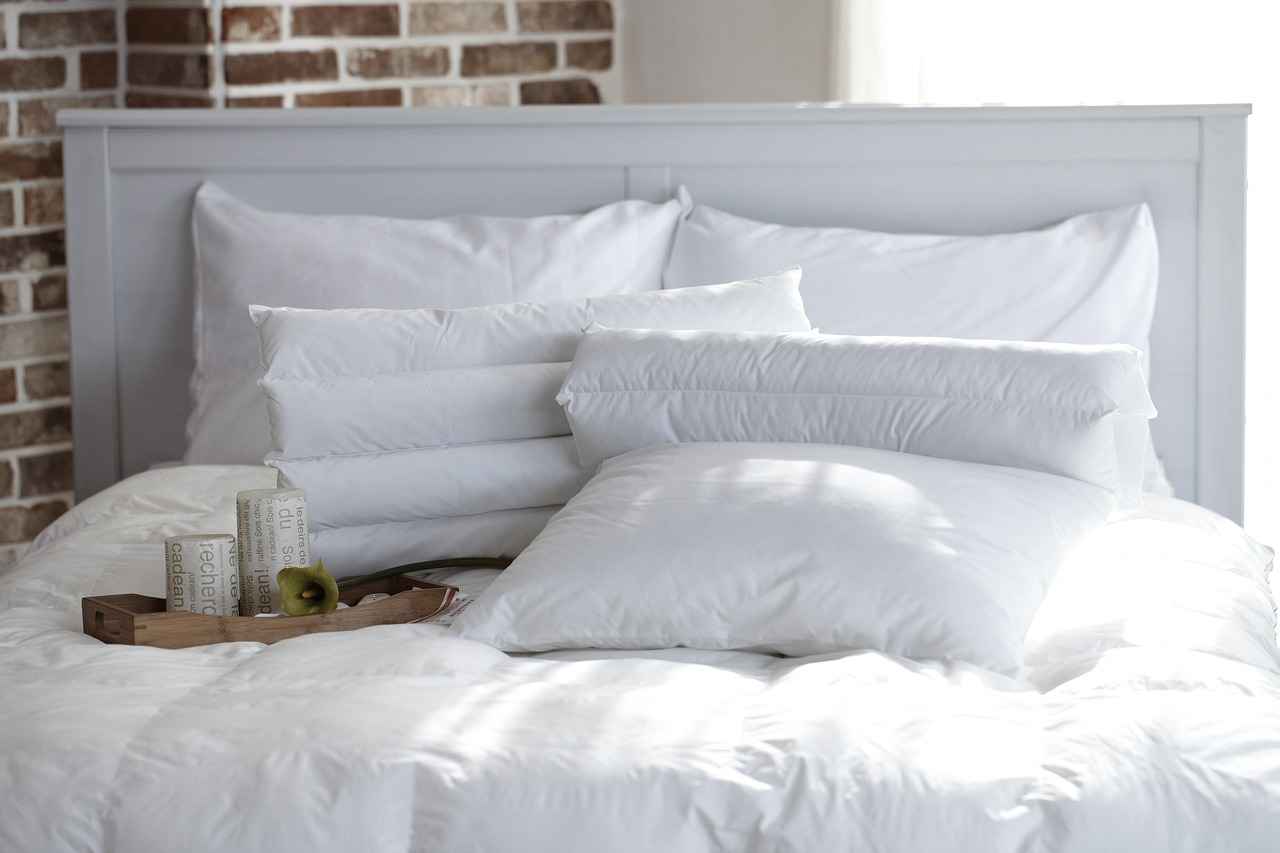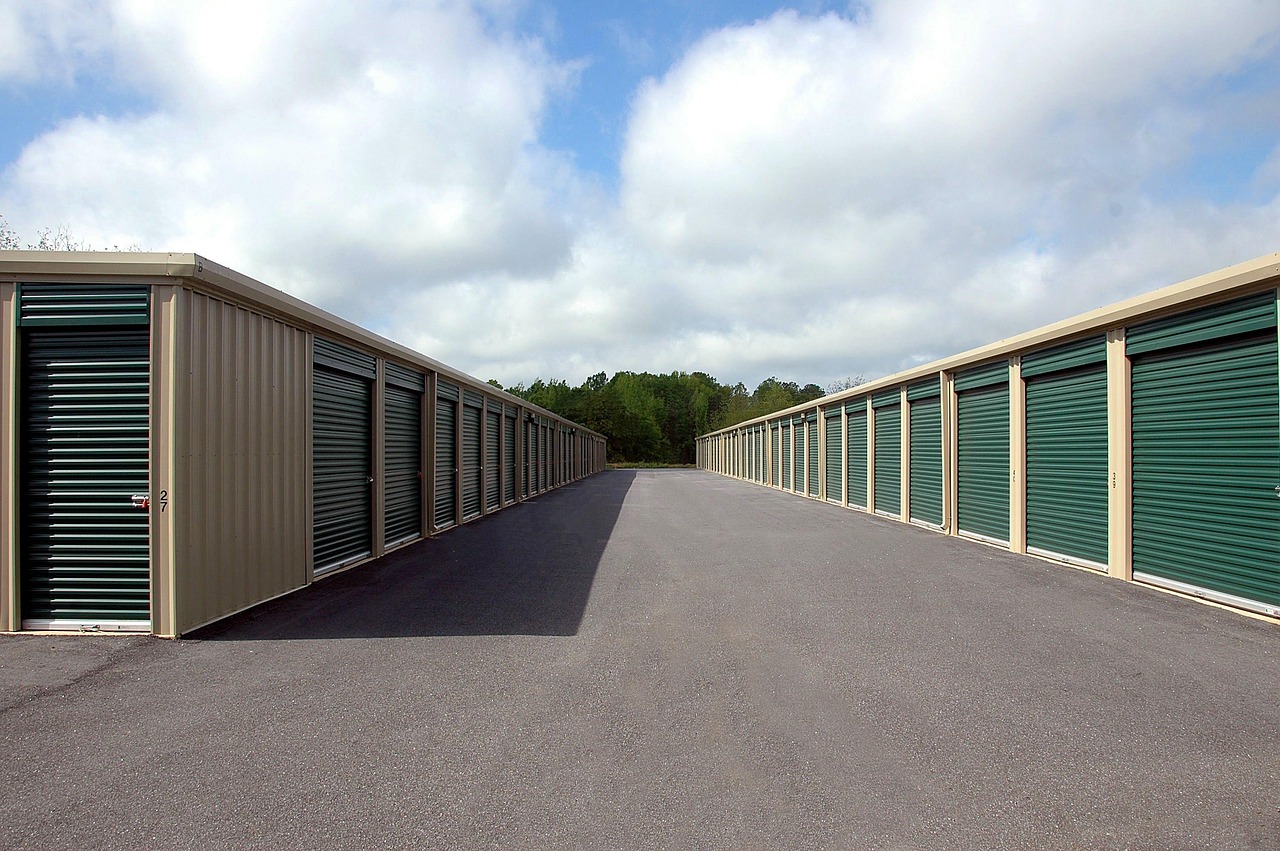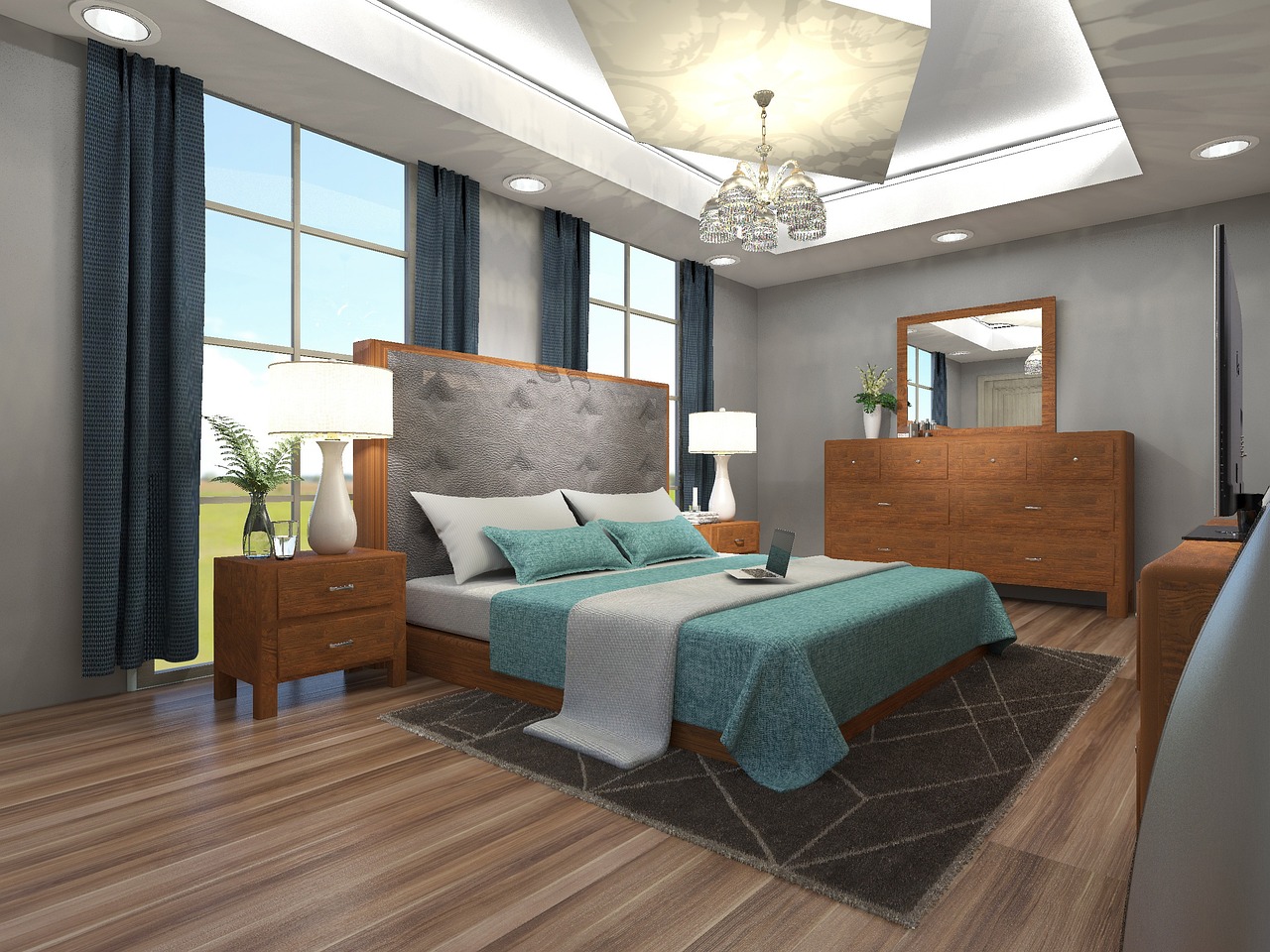When it comes to designing a small guest room, maximizing both space and comfort is essential. This article explores innovative bed designs that can transform your guest space into a welcoming retreat, providing practical insights and creative suggestions to enhance the overall experience for your visitors.
- 1. Space-Saving Murphy Beds
Murphy beds are a fantastic solution for small guest rooms, as they fold up against the wall when not in use, freeing up valuable floor space for other activities.
- 2. Stylish Daybeds
Daybeds serve dual purposes, functioning as both a bed and a seating area. They can enhance the aesthetics of a small guest room while providing comfort for overnight visitors.
- 2.1. Daybed Covers and Cushions
Choosing the right covers and cushions can elevate the look of a daybed, making it a stylish focal point in your guest room while ensuring comfort for your guests.
- 2.2. Versatile Daybed Designs
Consider daybeds with built-in storage or trundles for added functionality, allowing you to accommodate more guests without sacrificing space.
- 2.1. Daybed Covers and Cushions
- 3. Lofted Beds for Extra Floor Space
Lofted beds elevate the sleeping area, creating additional space underneath for a desk, seating, or storage, making them ideal for small guest rooms.
- 4. Foldable and Portable Beds
Foldable beds are incredibly versatile, allowing you to easily set them up for guests and store them away when not in use, making them perfect for small spaces.
- 5. Custom Built-in Bed Solutions
Custom built-in beds can optimize space and provide a tailored look for your guest room, allowing for creative designs that fit your specific dimensions and style.
Conclusion: Designing a small guest room that is both functional and inviting requires careful planning and creativity. By incorporating these design ideas, you can provide a comfortable retreat for your visitors.
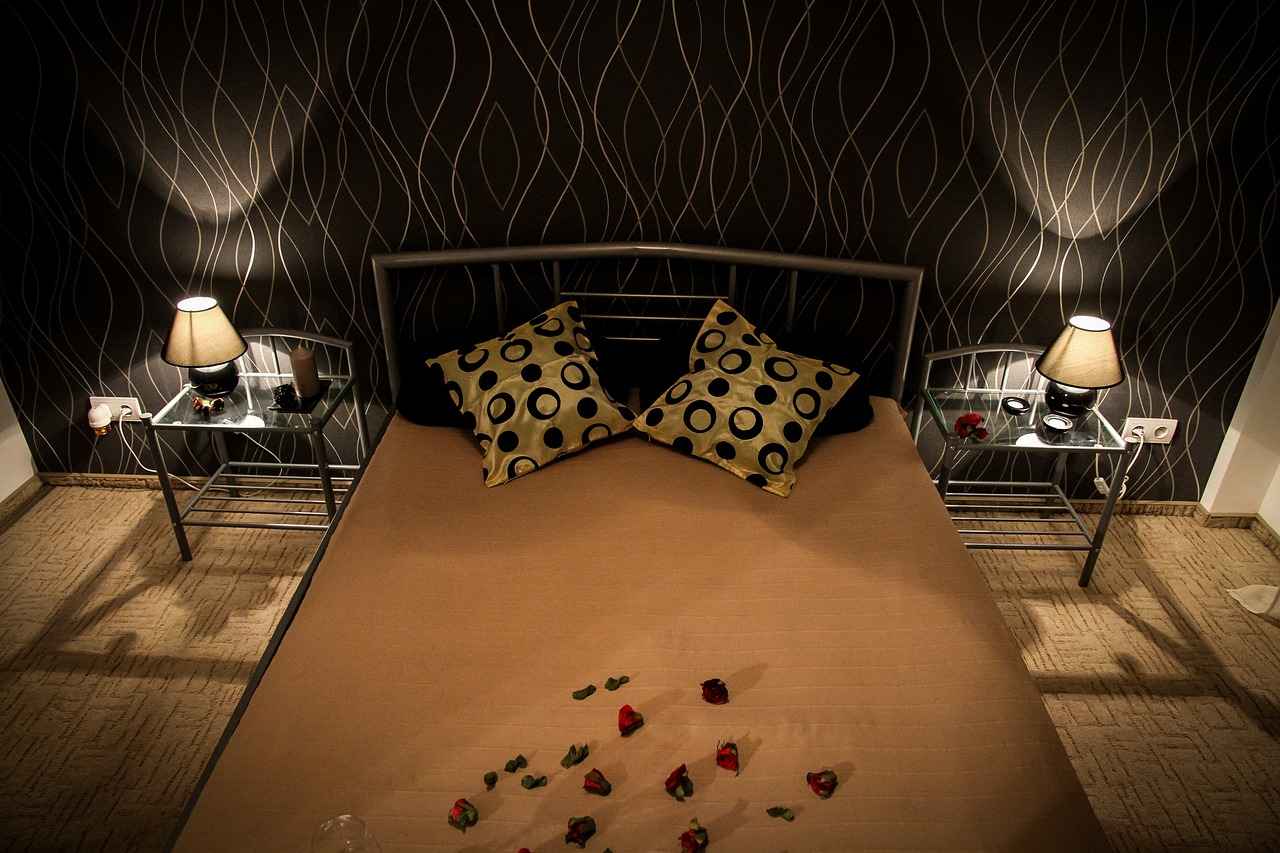
1. Space-Saving Murphy Beds
Space-Saving Murphy Beds are an ingenious solution for maximizing the utility of small guest rooms. These beds, also known as wall beds, can be easily folded up against the wall when not in use, effectively freeing up valuable floor space for other activities. This innovative design not only enhances the functionality of the room but also allows for a more open and airy environment.
Murphy beds come in various styles and finishes, making it easy to find one that complements your guest room’s decor. Modern designs often include built-in cabinetry, providing additional storage options for linens, pillows, or even books. This dual-purpose functionality is particularly beneficial in small spaces where every inch counts.
When selecting a Murphy bed, consider the following:
- Size and Dimensions: Ensure the bed fits comfortably in your space without overwhelming the room.
- Mattress Quality: Choose a comfortable mattress that provides adequate support for your guests.
- Ease of Use: Look for a model that can be easily opened and closed, making it convenient for both you and your guests.
In addition to their practicality, Murphy beds can also be a stylish focal point in your guest room. Customization options allow you to choose finishes and colors that blend seamlessly with your existing decor, whether it’s a modern, rustic, or traditional theme.
Overall, Murphy beds represent a smart investment in space-saving solutions for small guest rooms. They not only provide a comfortable sleeping area but also enhance the overall aesthetic and functionality of the space, making your home a welcoming retreat for visitors.
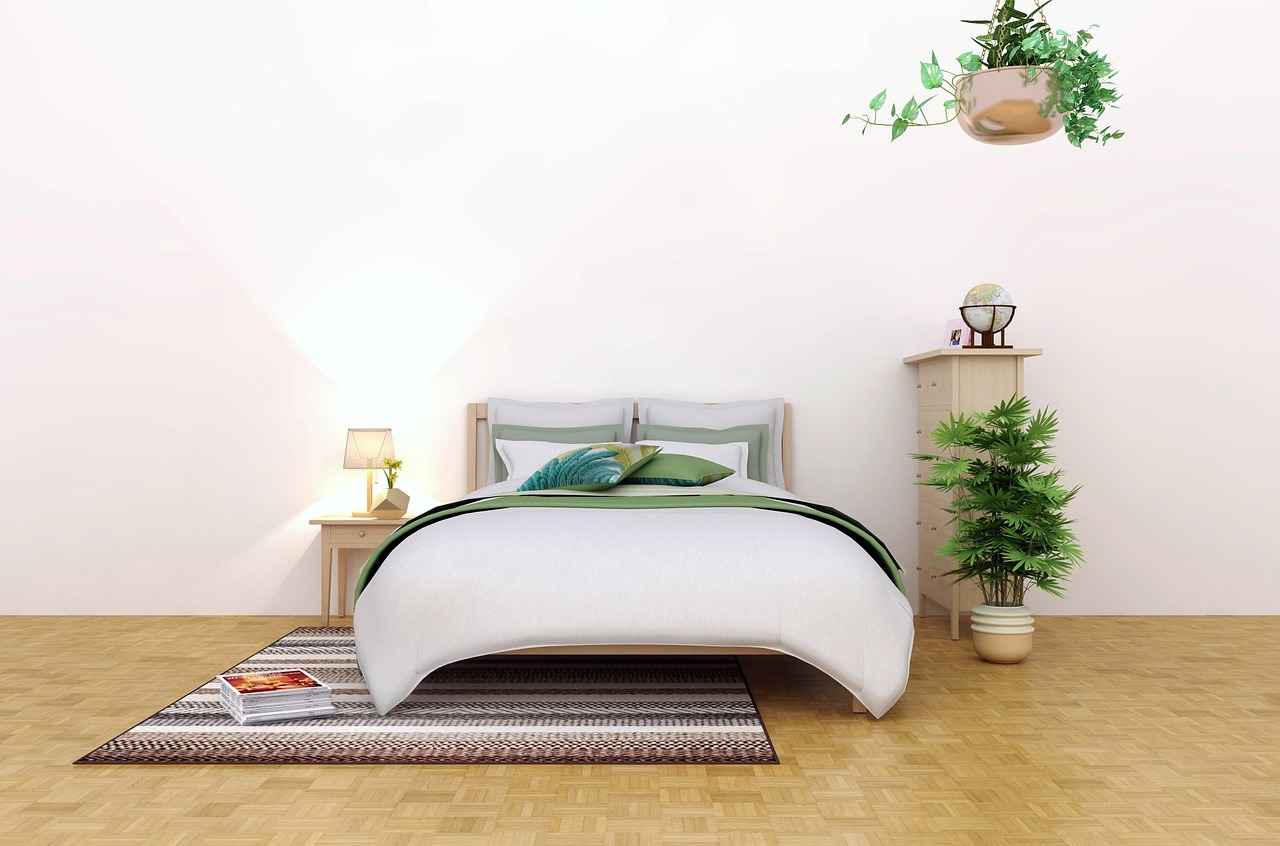
2. Stylish Daybeds
Stylish Daybeds are a versatile addition to any small guest room, effortlessly combining functionality with aesthetic appeal. These unique pieces serve a dual purpose, acting as both a bed for overnight guests and a comfortable seating area during the day. By incorporating a daybed into your design, you can maximize space while creating a welcoming atmosphere for visitors.
One of the most significant advantages of daybeds is their space-saving design. Unlike traditional beds, which occupy a large footprint, daybeds can be placed against a wall or in a corner, freeing up valuable floor space for other furniture or activities. This is particularly beneficial in small rooms where every inch counts.
Daybed Covers and Cushions play a crucial role in enhancing the overall look of the daybed. Selecting the right fabrics can transform a simple daybed into a stylish focal point. Here are some tips for choosing the perfect covers:
- Fabric Choices: Opt for durable materials that are easy to clean. Fabrics like cotton or polyester blends can withstand wear while maintaining their appearance.
- Color Schemes: A cohesive color palette can tie the room together. Consider colors that complement the existing decor to create a harmonious look.
Versatile Daybed Designs offer additional functionality. Many daybeds come with built-in storage or trundles, allowing you to accommodate more guests without sacrificing space. This feature is especially useful for families or groups visiting, as it provides extra sleeping arrangements without cluttering the room.
In conclusion, incorporating a stylish daybed into a small guest room not only enhances its aesthetic charm but also maximizes functionality. By choosing the right covers, cushions, and designs, you can create a comfortable and inviting space that your guests will appreciate. Embrace the versatility of daybeds and transform your guest room into a cozy retreat.
2.1. Daybed Covers and Cushions
Choosing the right covers and cushions for your daybed is crucial in transforming it into a stylish and comfortable centerpiece in your guest room. A well-decorated daybed not only enhances the aesthetic appeal of the space but also ensures that your guests feel welcome and comfortable during their stay.
When selecting covers and cushions, consider the following factors:
- Fabric Quality: Opt for durable, easy-to-clean fabrics that will withstand regular use. Fabrics like cotton, linen, or blends are excellent choices as they combine comfort with practicality.
- Color and Pattern: Choose colors and patterns that complement the overall decor of the room. A cohesive color scheme can create a harmonious look, making the daybed a focal point that ties the entire room together.
- Comfort Level: Cushions should provide adequate support while remaining soft enough for relaxation. Consider using a mix of firm and plush cushions to cater to different preferences.
Additionally, layering different sizes and shapes of cushions can add depth and interest to the daybed’s design. For example, large back cushions can offer support, while smaller decorative cushions can introduce color and texture.
Another aspect to consider is the functionality of the daybed. Incorporating storage solutions into your cushion choices, such as cushions that double as storage boxes, can help maintain a tidy appearance in the guest room.
In conclusion, investing time in selecting the right daybed covers and cushions can significantly enhance the look and feel of your guest room. By prioritizing quality, comfort, and style, you can create an inviting space that your guests will appreciate and enjoy.
2.1.1. Fabric Choices
When selecting fabrics for your daybed, it’s essential to prioritize both durability and ease of cleaning. This ensures that your daybed remains a practical and appealing option for guests, while also complementing the overall decor of the room.
Durable fabrics are crucial in high-traffic areas, as they resist wear and tear, maintaining their appearance over time. Look for materials like canvas, denim, or polyester blends that can withstand the rigors of daily use. These fabrics not only offer longevity but also provide a comfortable surface for guests.
In addition to durability, consider the cleaning aspect. Fabrics that are stain-resistant or can be easily wiped down are ideal for guest rooms. For instance, microfiber is both soft and easy to clean, making it a popular choice. Additionally, fabrics that are machine washable can save you time and effort in maintaining a fresh look.
Moreover, choosing fabrics that match the room’s color scheme and style is equally important. A cohesive look can be achieved by selecting colors and patterns that tie in with the existing decor. For example, if your room features a nautical theme, consider fabrics with stripes or marine colors to enhance the aesthetic appeal.
Ultimately, the right fabric choice for your daybed can transform it into a stylish focal point while ensuring that it remains a functional and comfortable space for your guests. With careful consideration of durability, ease of cleaning, and design compatibility, your daybed will serve as an inviting retreat for all who stay.
2.1.2. Color Schemes
When designing a small guest room, choosing the right color scheme is essential for creating a harmonious and inviting atmosphere. A cohesive color palette not only enhances the aesthetic appeal but also ensures that the daybed integrates seamlessly into the overall decor of the room.
To achieve this, consider the following aspects:
- Complementary Colors: Select colors that complement each other. For example, if your walls are painted in a soft blue, consider a daybed in a crisp white or a muted gray to create a soothing contrast.
- Accent Colors: Incorporate accent colors through cushions, throws, or wall art. These can add a pop of color without overwhelming the space. For instance, vibrant yellows or greens can bring a lively touch to a neutral room.
- Monochromatic Schemes: A monochromatic color scheme, using various shades of a single color, can create a sophisticated look. This approach can make the room feel more expansive and cohesive.
- Natural Tones: Earthy tones, such as browns, greens, and soft blues, can create a calming environment. They work well with natural materials and can enhance the overall comfort of the guest room.
Additionally, it’s important to consider the lighting in the room, as it can significantly affect how colors appear. Natural light can bring out the warmth in colors, while artificial lighting can alter their perception. Testing paint samples in different lighting conditions can ensure you achieve the desired effect.
Incorporating a well-thought-out color scheme not only ties the room together but also makes the daybed a stylish focal point. By thoughtfully selecting colors that resonate with the overall theme of the guest room, you can create a space that is both functional and inviting for your guests.
2.2. Versatile Daybed Designs
When it comes to maximizing space in a small guest room, daybeds offer a remarkable blend of style and functionality. These versatile pieces of furniture can serve as both a bed and a seating area, making them ideal for accommodating guests without compromising on space.
One of the most appealing features of daybeds is their ability to integrate built-in storage options. Many daybeds come equipped with drawers or compartments beneath the mattress, providing a practical solution for storing bedding, pillows, or even personal belongings of your guests. This clever design not only keeps the room tidy but also allows you to utilize every inch of available space effectively.
Another excellent option is a daybed with a trundle bed. This additional bed can be pulled out when needed, allowing you to host more guests without needing extra floor space for a full-sized bed. When not in use, the trundle neatly tucks away under the daybed, preserving the room’s open feel and aesthetic. This is especially beneficial in small rooms where every square foot counts.
In terms of style, daybeds are available in a variety of designs, from modern minimalist to classic ornate styles, ensuring that you can find one that complements your guest room’s decor. Consider options with decorative headboards or unique frames to enhance visual interest and create a cozy atmosphere.
When choosing a daybed, think about fabric choices and color schemes. Selecting durable, easy-to-clean fabrics in colors that harmonize with the overall design can elevate the look of the daybed, making it a stylish focal point in your guest room while ensuring comfort for your guests.
In summary, versatile daybed designs with built-in storage or trundles provide a smart solution for small guest rooms. They not only save space but also offer comfort and style, ensuring that your guests have a pleasant stay.

3. Lofted Beds for Extra Floor Space
Lofted beds are an innovative solution for maximizing space in small guest rooms. By elevating the sleeping area, these beds create a unique opportunity to utilize the floor space beneath for various purposes. This design is particularly beneficial in compact areas where every square foot counts.
One of the primary advantages of lofted beds is the versatility they offer. The space underneath can be transformed into a cozy study nook, a comfortable seating area, or even additional storage solutions. For instance, a small desk can be placed beneath the bed, allowing guests to work or study in a dedicated space without feeling cramped. Alternatively, adding a few cushions and a small coffee table can create a charming reading corner.
Moreover, lofted beds are ideal for accommodating multiple guests. By utilizing the area below, you can easily fit in an extra mattress or a foldable bed, ensuring that everyone has a comfortable place to sleep without overcrowding the room. This makes lofted beds an excellent choice for families or groups of friends visiting.
When considering a lofted bed, it’s essential to pay attention to safety features. Look for models with sturdy guardrails and easy-to-climb ladders to ensure a secure sleeping environment. Additionally, the height of the bed should be appropriate for the room’s ceiling to prevent any accidents.
In conclusion, lofted beds are a practical and stylish addition to small guest rooms. They not only enhance the functionality of the space but also contribute to a more organized and inviting atmosphere. By thoughtfully utilizing the area beneath, you can create a guest room that is both comfortable and efficient.
3.1. Under-Bed Utilization
Maximizing the area beneath a lofted bed can significantly enhance the usability of a small room, providing essential space for various activities. By creatively utilizing this under-bed space, you can transform a cramped area into a multifunctional zone that caters to your needs.
Here are some practical ideas for under-bed utilization:
- Storage Solutions: Use storage bins or drawers to keep items organized. This can include seasonal clothing, extra bedding, or books, allowing you to maintain a tidy living space.
- Workstation: If you need a workspace, consider placing a compact desk or folding table underneath the lofted bed. This can create a cozy nook for studying or working from home.
- Relaxation Area: Incorporate a small bean bag or a couple of floor cushions to create a reading corner or a space for relaxation. This area can serve as a mini retreat within your room.
- Exercise Space: Use the area for a yoga mat or small exercise equipment like dumbbells or a jump rope. This promotes an active lifestyle even in limited space.
When planning the under-bed setup, consider accessibility and aesthetics. Ensure that the items you store are easy to reach and that the overall look remains cohesive with your room’s decor. Utilizing vertical storage options, such as shelving units or hanging organizers, can also complement the space effectively.
In conclusion, the area beneath a lofted bed is not merely wasted space; it can be a valuable asset in a small room. By implementing these ideas, you can maximize functionality while keeping your space organized and inviting.
3.2. Safety Features
When it comes to selecting a lofted bed for a small guest room, safety should be a top priority. These beds not only save space but also provide a unique sleeping experience. However, to ensure a secure environment for your guests, it is essential to consider specific safety features.
Guardrails are a crucial component of any lofted bed. They act as a protective barrier, preventing guests from accidentally rolling off the bed during the night. It is recommended to choose a lofted bed with high guardrails that extend at least 5 inches above the mattress. This extra height can significantly reduce the risk of falls, particularly for children or guests who may be less stable while sleeping.
Another important feature is a sturdy ladder. The ladder should be securely attached to the bed frame and designed for easy access. Look for ladders with wide steps and non-slip surfaces to enhance safety when climbing up or down. Additionally, consider the angle of the ladder; a more gradual incline can make it easier and safer for guests to navigate.
It’s also wise to check the bed’s weight capacity. Ensure that the lofted bed can comfortably support the weight of the intended occupants. Most manufacturers provide weight limits, so adhere to these guidelines to avoid any potential accidents.
Finally, consider the overall stability of the lofted bed. A well-constructed frame made from high-quality materials will provide a safer sleeping environment. Look for beds that have been tested for stability and durability, as this will ensure the bed remains secure throughout its use.
By focusing on these essential safety features, you can create a secure and comfortable sleeping environment for your guests, allowing them to enjoy their stay without worry.
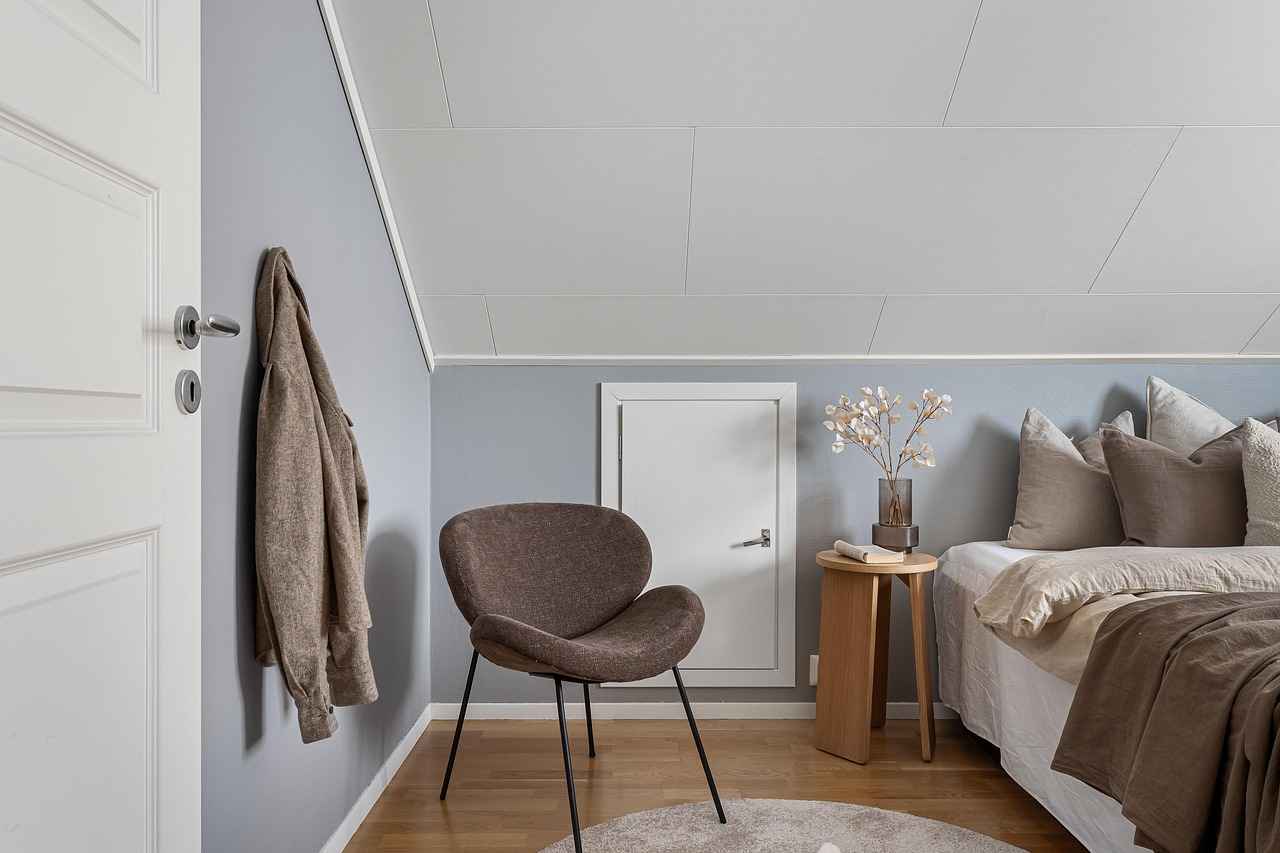
4. Foldable and Portable Beds
Foldable and Portable Beds are essential furnishings for maximizing space in small guest rooms. Their versatility allows you to easily accommodate guests without sacrificing valuable floor space. These beds can be set up in minutes and just as quickly stored away when not in use, making them an ideal choice for compact living areas.
One of the greatest advantages of foldable beds is their space-saving design. When folded, they can be tucked away in closets, under other beds, or even behind doors, allowing for a clutter-free environment. This is particularly beneficial in urban settings where every square foot counts.
- Rollaway Beds: These beds come with wheels for easy mobility. They are perfect for unexpected guests and can be stored away conveniently.
- Inflatable Mattresses: Lightweight and portable, inflatable mattresses can be inflated for use and deflated for storage, making them incredibly easy to manage.
- Folding Futons: These multifunctional pieces can serve as both a bed and a sofa, providing a comfortable seating option during the day.
While foldable beds offer convenience, it is crucial to ensure they provide adequate support and comfort. Look for models with high-quality mattresses that offer good back support. Some foldable beds come with memory foam options, which can enhance the sleeping experience for your guests.
Many foldable beds also feature built-in storage options, such as compartments or pockets for bedding and pillows. This added functionality can help keep your guest room organized and ready for use at a moment’s notice.
In conclusion, foldable and portable beds are a practical solution for maximizing space in small guest rooms. They provide a comfortable sleeping arrangement for visitors while allowing you to maintain a tidy and functional living space.
4.1. Types of Foldable Beds
When it comes to optimizing space in your guest room, foldable beds offer an excellent solution. These versatile sleeping options can be easily set up when needed and stored away when not in use, making them perfect for smaller spaces. Here, we will explore several popular types of foldable beds, including rollaway beds and inflatable mattresses, to help you determine the best fit for your guest room.
- Rollaway Beds
- Rollaway beds are designed with a sturdy frame and a comfortable mattress that can be easily rolled into a compact position for storage.
- They are ideal for accommodating unexpected guests, providing a reliable sleeping surface without taking up permanent space.
- Many models come with additional features, such as foldable legs and casters for easy mobility.
- Inflatable Mattresses
- Inflatable mattresses, also known as air beds, can be inflated and deflated quickly, making them highly portable.
- They are available in various sizes and thicknesses, offering customizable comfort levels for your guests.
- Many inflatable options come with built-in pumps for convenience, ensuring a hassle-free setup.
- Folding Bed Frames
- Folding bed frames are lightweight and can be easily stored in closets or under beds.
- They often come with a mattress included, providing a complete sleeping solution that can be set up in minutes.
- These beds are perfect for small apartments or homes where space is at a premium.
In conclusion, choosing the right type of foldable bed can significantly enhance the functionality of your guest room. Consider the needs of your guests and the space you have available to find the most suitable option.
4.2. Comfort Considerations
When it comes to accommodating guests in a small space, choosing a foldable bed with adequate support and comfort features is essential to ensure your guests have a pleasant sleeping experience. A well-designed foldable bed not only provides a cozy place for your visitors to rest but also maximizes the functionality of your guest room.
Here are some important considerations to keep in mind:
- Supportive Mattress: Look for foldable beds that come with high-quality mattresses. A supportive mattress is crucial as it impacts sleep quality significantly. Memory foam or pocket-spring mattresses are popular choices that offer both comfort and support.
- Sturdiness: Ensure that the frame of the foldable bed is robust and durable. A sturdy bed frame not only enhances safety but also provides a stable sleeping surface, avoiding any discomfort during the night.
- Easy Setup: One of the advantages of foldable beds is their ease of setup. Choose a model that can be quickly unfolded and set up without too much effort, allowing you to accommodate guests swiftly.
- Portability: If you plan to move the foldable bed frequently, consider its weight and design. Lightweight options with wheels can make transportation much easier.
- Storage Options: Some foldable beds come with built-in storage solutions, which can be a great way to keep your guest room organized. Look for beds that allow you to store extra linens or pillows conveniently.
Ultimately, investing in a quality foldable bed with these features can significantly enhance the comfort of your guest room, ensuring that your visitors enjoy a restful night’s sleep. By prioritizing comfort and practicality, you can transform your small guest space into a welcoming retreat.
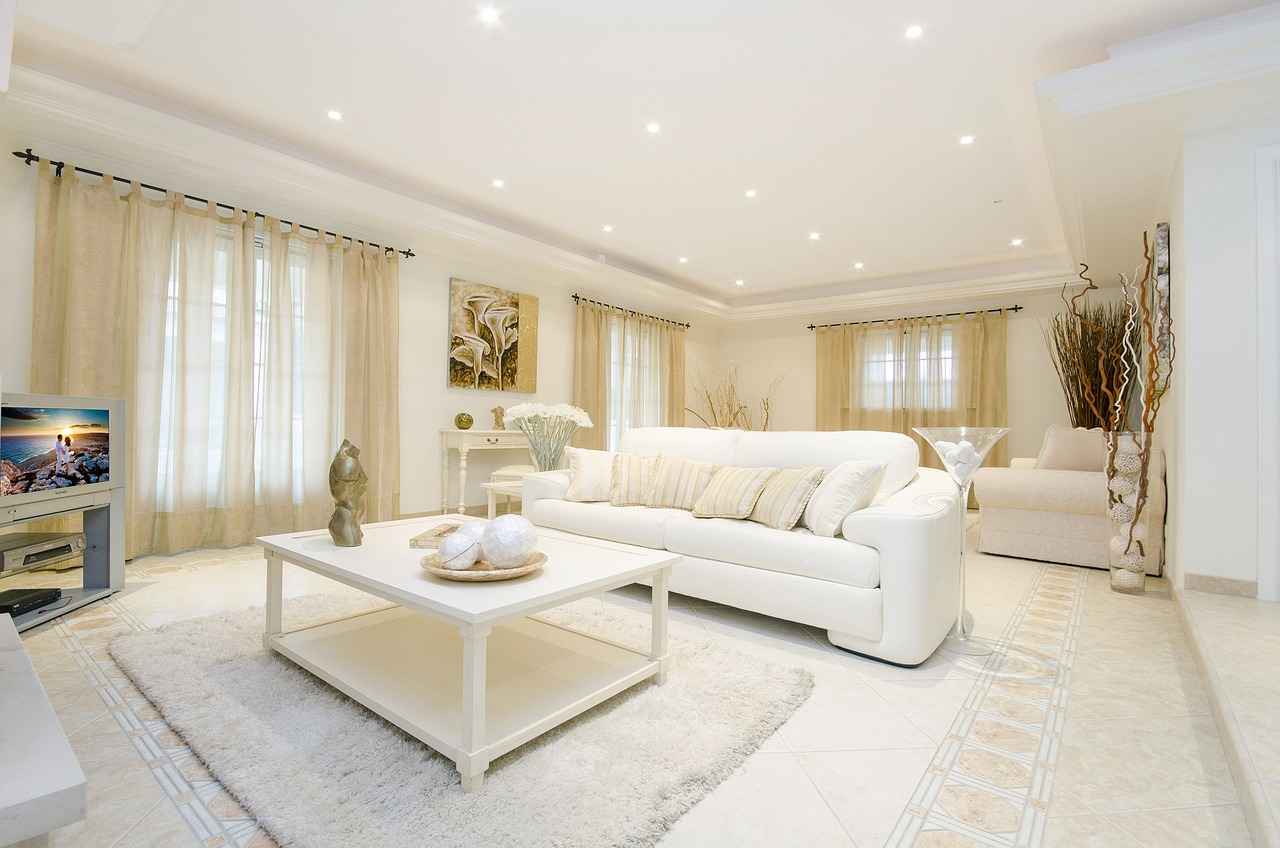
5. Custom Built-in Bed Solutions
Custom built-in beds are an innovative solution for optimizing space in your guest room while providing a tailored look that enhances the overall aesthetic. These beds are designed to fit your specific dimensions and style, allowing for unique and creative designs that can transform any small space into a cozy retreat.
One of the key advantages of custom built-in beds is their ability to maximize available space. By integrating the bed into the room’s architecture, you can free up valuable floor space for other furniture or activities. This is especially beneficial in smaller guest rooms where every inch counts.
Moreover, custom beds can be designed with additional features such as integrated storage or shelving units. This not only enhances functionality but also keeps the room organized and clutter-free. For example, you can add drawers beneath the mattress or shelves above the bed for books and decorative items, making the space both practical and visually appealing.
When considering a custom built-in bed, it is essential to think about the design flexibility it offers. You can choose from various styles, materials, and colors that complement your existing decor. Whether you prefer a modern minimalist design or a more traditional look, a custom bed can be tailored to your preferences.
Additionally, professional installation is highly recommended for custom built-in beds. Skilled craftsmen can ensure that the bed is securely constructed and aesthetically pleasing, maximizing your investment in the guest room. Proper installation also guarantees safety, particularly if the bed includes features such as lofting or additional storage.
In conclusion, custom built-in beds are an excellent choice for those looking to optimize space and enhance the design of their guest room. With their versatility and ability to integrate seamlessly into the room’s layout, these beds provide both style and functionality, ensuring a comfortable experience for your guests.
5.1. Design Flexibility
Design Flexibility is a crucial aspect when it comes to creating custom built-in bed solutions for small guest rooms. By opting for a bespoke design, you can tailor the bed to fit your specific space requirements and aesthetic preferences.
One of the primary advantages of custom designs is the ability to incorporate various features that enhance both functionality and style. For instance, you can integrate shelves into the bed structure, providing additional storage for books, decor, or personal items without occupying extra floor space. This not only maximizes the utility of the room but also adds a personalized touch.
Moreover, lighting can be seamlessly integrated into the bed design. Installing built-in LED lights or reading lamps can create a cozy ambiance and offer convenience for guests, making it easier for them to read or unwind before sleep. This thoughtful addition can significantly enhance the overall experience of staying in the guest room.
Another significant benefit of custom designs is the ability to include storage solutions that cater to your guests’ needs. For example, drawers can be built into the bed frame to store extra linens, pillows, or even clothing, keeping the room organized and clutter-free. This is especially useful in small spaces where every inch counts.
When planning a custom bed design, it’s essential to consider the overall aesthetic of the room. Choose materials and finishes that complement the existing decor, whether it’s a modern, minimalist look or a more traditional style. This attention to detail can create a cohesive and inviting atmosphere.
In conclusion, custom built-in bed solutions offer remarkable design flexibility that enhances both the functionality and aesthetic appeal of a small guest room. By incorporating elements such as shelves, lighting, and storage, you can create a space that is not only practical but also welcoming for your guests.
5.2. Professional Installation
When it comes to creating a custom bed for your guest room, professional installation is a crucial step that should not be overlooked. Engaging a skilled installer can ensure that your bed is not only aesthetically pleasing but also safe and functional. The right installation can maximize your investment by enhancing the overall look and feel of the room.
One of the primary benefits of hiring a professional is their expertise in design and construction. They can provide valuable insights on how to best utilize the space, ensuring that your custom bed fits perfectly within the dimensions of your guest room. Additionally, professionals have access to the right tools and materials, which can significantly reduce the risk of errors during the installation process.
Moreover, a well-installed custom bed can enhance the safety of the sleeping area. This is particularly important if the bed has features like lofted designs or built-in storage. Professionals can ensure that all components are securely attached and meet safety standards, giving you peace of mind that your guests will be comfortable and secure.
Another advantage of professional installation is the potential for design enhancements. Skilled installers can incorporate unique features such as integrated lighting, shelving, or additional storage solutions that may not be obvious to the average DIY enthusiast. This level of detail can elevate the functionality and style of your guest room, making it a more inviting space for visitors.
In conclusion, while it may be tempting to save costs by attempting a DIY installation, investing in a professional is a wise decision that can lead to a more polished and safe outcome. By ensuring that your custom bed is installed correctly, you can create a stylish and functional guest room that maximizes your investment and provides a welcoming retreat for your visitors.

6. Multi-Functional Furniture
Multi-functional furniture is an essential consideration for small guest rooms, offering versatile solutions that cater to both comfort and space efficiency. By investing in these innovative pieces, you can create a warm and inviting atmosphere without compromising on style or functionality.
One of the most significant advantages of multi-functional furniture is its ability to provide additional sleeping options while keeping the room organized. For instance, a sofa bed can seamlessly transform from a cozy seating area into a comfortable bed, making it an ideal choice for accommodating overnight guests. This dual-purpose design not only saves space but also enhances the aesthetic appeal of the room.
Another excellent option is an ottoman with storage. These versatile pieces serve as both a footrest and a hidden storage solution, allowing guests to tuck away their belongings easily. This feature is particularly beneficial in small spaces, where clutter can quickly accumulate. By providing a designated area for storage, you can maintain a clean and organized look, ensuring that your guests feel comfortable and at home.
Additionally, consider incorporating a daybed into your guest room design. Daybeds can function as both a bed and a seating area, offering flexibility for various activities. With the right cushions and covers, a daybed can become a stylish focal point that enhances the room’s overall decor.
In conclusion, investing in multi-functional furniture pieces not only maximizes the usability of a small guest room but also creates a welcoming environment for your visitors. By thoughtfully selecting these versatile items, you can achieve a balance between style and practicality, ensuring that your guest room remains both functional and inviting.
6.1. Sofa Beds
Sofa beds are an excellent solution for maximizing space in small guest rooms. They combine the functionality of a sofa with the comfort of a bed, making them a versatile choice for any home. These multi-functional pieces not only offer a cozy seating area during the day but also transform into a comfortable sleeping arrangement at night, ensuring that your guests feel welcome and at ease.
One of the significant advantages of sofa beds is their ability to save space. In smaller rooms, every square foot counts, and a sofa bed allows you to use the same piece of furniture for two purposes. This dual functionality is particularly beneficial in urban apartments or guest rooms where space is limited.
When selecting a sofa bed, consider the following key factors:
- Size: Choose a size that fits your space without overwhelming it. Compact models are available for tighter areas.
- Comfort: Look for a sofa bed with a high-quality mattress to ensure a good night’s sleep for your guests. Memory foam options are popular for their comfort.
- Style: Opt for a design that complements your existing decor. From modern to traditional, there are numerous styles available.
- Ease of Use: Select a model that is easy to convert from a sofa to a bed. Mechanisms that require minimal effort are ideal.
In addition to these considerations, sofa beds can also serve as an attractive focal point in your guest room. With various fabric options and colors, you can choose a design that reflects your personal style while remaining functional.
In conclusion, incorporating a sofa bed into your small guest room design is a practical and stylish solution. It provides both seating and sleeping arrangements without taking up extra space, making it an ideal choice for accommodating guests comfortably.
6.2. Ottomans with Storage
In the quest for maximizing space in a small guest room, ottomans with storage emerge as a multifunctional hero. These versatile pieces of furniture not only serve as extra seating or a comfortable footrest but also provide a clever solution for keeping the room organized and clutter-free.
When hosting guests, having a designated space for their belongings can significantly enhance their experience. Storage ottomans can be used to stow away items like blankets, pillows, or personal belongings, ensuring that the guest room remains tidy. This dual functionality is particularly valuable in smaller spaces where every square inch counts.
- Variety of Styles: Ottomans come in various designs, colors, and materials, allowing you to choose one that complements the overall decor of the guest room. From sleek leather finishes to cozy fabric options, there is an ottoman for every aesthetic.
- Easy Accessibility: Guests can easily access their stored items without rummaging through closets or drawers, providing convenience during their stay.
- Versatile Uses: Beyond storage, ottomans can serve multiple purposes, such as a coffee table when paired with a tray, or additional seating during gatherings.
To maximize the benefits of storage ottomans, consider placing them at the foot of the bed or in a corner of the room where they can be easily accessed. Additionally, selecting ottomans with removable lids can enhance usability and make it easier to organize items.
In conclusion, integrating ottomans with storage into your small guest room design not only optimizes space but also elevates the overall functionality and comfort of the area. By providing a stylish and practical solution for your guests, you can create a welcoming environment that encourages relaxation and enjoyment.
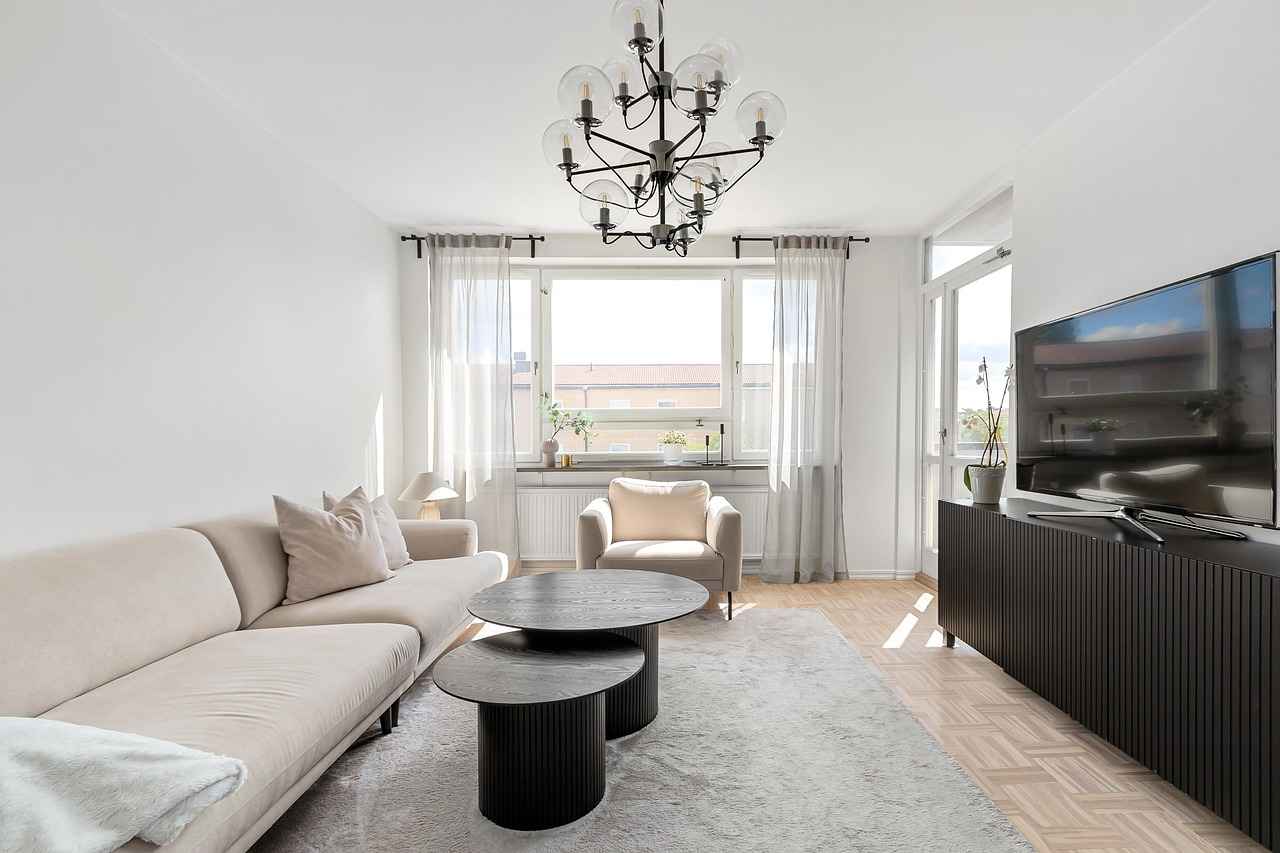
7. Smart Use of Vertical Space
In small guest rooms, utilizing vertical space effectively is crucial for enhancing functionality and creating a sense of spaciousness. By focusing on vertical elements, you can transform a cramped area into a well-organized and inviting retreat for your visitors.
7.1. Wall-Mounted Shelves
One of the best ways to maximize vertical space is through wall-mounted shelves. These shelves not only provide essential storage but also serve as decorative displays for books, plants, or personal items. By keeping the floor clear, you create a more open environment that feels larger than it is.
7.2. Hanging Organizers
Consider using hanging organizers for storing items such as toiletries, books, or accessories. These organizers can be hung on doors or walls, keeping surfaces clutter-free. They are particularly useful in small spaces, as they allow quick access to essentials while maintaining an orderly appearance.
7.3. Vertical Storage Solutions
Investing in vertical storage solutions, such as tall cabinets or narrow bookshelves, can help you take advantage of upward space. These options can provide ample storage without occupying too much floor area, allowing you to keep the room tidy and functional.
7.4. Artwork and Decor
Incorporating artwork and decor that draws the eye upward can create an illusion of height. Consider hanging large pieces of art or using tall plants to draw attention to the vertical aspects of the room. This not only enhances the aesthetics but also makes the space feel more expansive.
7.5. Conclusion
By implementing smart vertical space solutions, you can significantly enhance the functionality of a small guest room. These strategies not only make the room feel larger but also create an organized and welcoming atmosphere for your guests.
7.1. Wall-Mounted Shelves
Wall-mounted shelves are an excellent solution for maximizing storage and display space in any room, especially in compact areas. By utilizing vertical space, these shelves help maintain a clutter-free environment while adding a touch of style to your decor.
One of the main advantages of wall-mounted shelves is their space-saving design. Unlike traditional furniture that occupies valuable floor area, these shelves are installed directly on the wall, allowing you to free up space for other essential items or furniture. This feature is particularly beneficial in small guest rooms, where every square foot counts.
Moreover, wall-mounted shelves can be customized to fit your specific needs. You can choose the size, shape, and material that complements your room’s decor, whether it’s a modern minimalist look or a cozy rustic vibe. Floating shelves, for example, create a sleek, contemporary appearance, while wooden shelves can add warmth and charm.
- Display Items: Use wall-mounted shelves to showcase books, decorative pieces, or plants, adding personality to your space.
- Storage Solutions: Install shelves in the bathroom or kitchen to store toiletries or spices, keeping counters clear.
- Artistic Arrangement: Create an eye-catching arrangement by varying the heights and lengths of the shelves.
In addition to their aesthetic appeal, wall-mounted shelves also promote organization. By providing designated spaces for various items, you can keep your guest room tidy and welcoming. This organization can enhance your guests’ experience, making them feel more at home.
In conclusion, wall-mounted shelves are a practical and stylish addition to any small space. They not only help in keeping the room tidy but also allow for creative expression through the display of personal items. Consider incorporating these shelves into your design to maximize both functionality and style.
7.2. Hanging Organizers
Hanging Organizers: A Smart Solution for Small Spaces
When it comes to optimizing space in a small guest room, hanging organizers offer a practical and stylish solution. These versatile storage solutions can be used to neatly store a variety of items, ensuring that surfaces remain clutter-free and accessible for your guests.
One of the key advantages of hanging organizers is their ability to maximize vertical space. By utilizing walls or the back of doors, you can free up valuable floor area, allowing for more movement and comfort in the room. Here are some ideas on how to effectively incorporate hanging organizers:
- Books: Use hanging organizers to store books, making it easy for guests to access their favorite reads without taking up precious shelf space.
- Toiletries: Hanging toiletry organizers can be placed in the bathroom or on the back of a door, keeping essentials like shampoo, conditioner, and other items neatly arranged.
- Accessories: Consider using organizers for small accessories such as chargers, keys, and other necessities, ensuring that these items are within reach but out of the way.
In addition to functionality, hanging organizers can also add a touch of style to the guest room. Choose designs that complement the overall decor, whether it’s modern, rustic, or eclectic. This way, you create a cohesive look while providing your guests with the convenience they appreciate.
Furthermore, hanging organizers are available in various materials, colors, and sizes, allowing you to select options that best suit your space and aesthetic. Whether you opt for fabric, plastic, or woven designs, the right choice can enhance the room’s appearance while serving a practical purpose.
In conclusion, incorporating hanging organizers into your small guest room design is a smart way to maximize space and maintain organization. By keeping essential items easily accessible, you ensure that your guests feel comfortable and welcome during their stay.
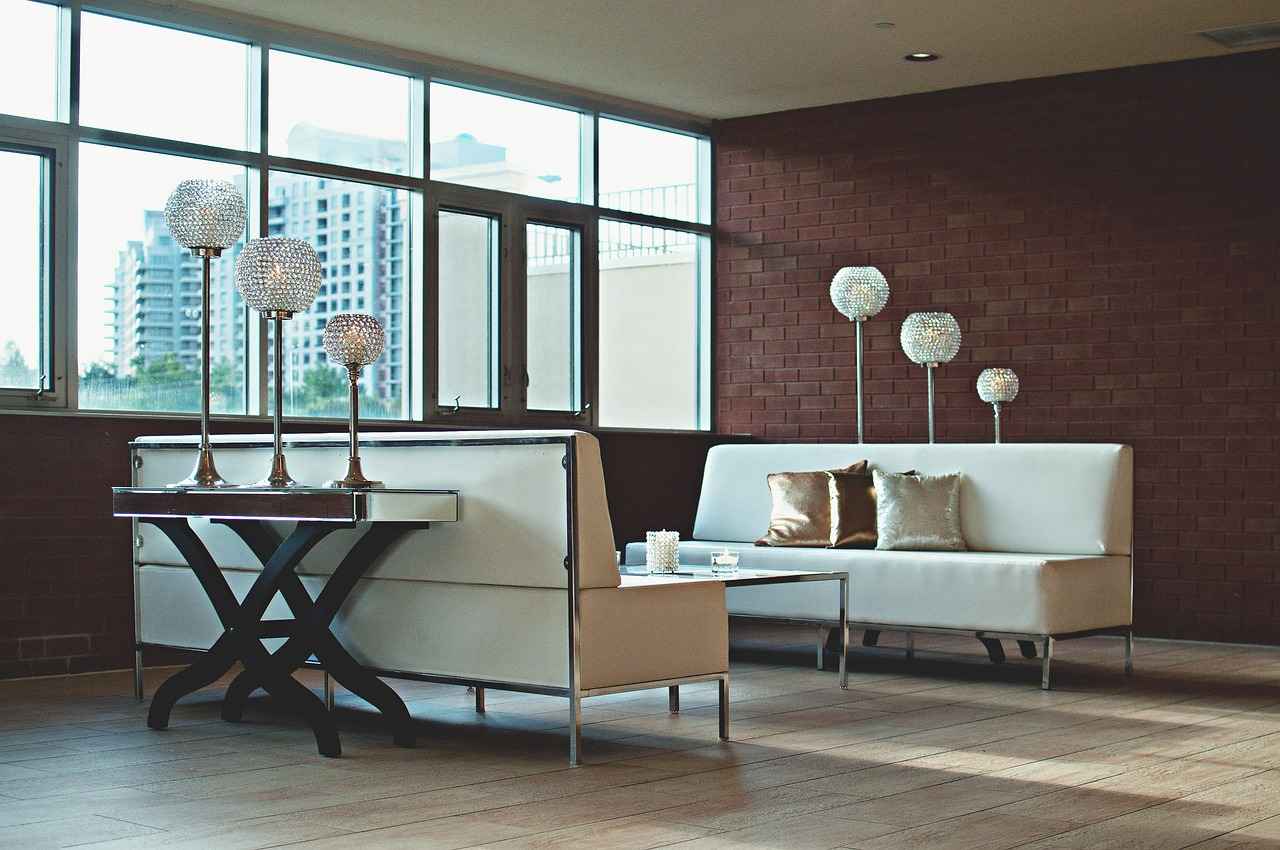
8. Creative Bed Placement
Creative bed placement is crucial in optimizing space and enhancing the overall ambiance of a small guest room. The way a bed is positioned can dramatically affect not only the room’s functionality but also its aesthetic appeal. Here, we explore innovative bed placement strategies that maximize space while creating a welcoming atmosphere for guests.
- 1. Corner Beds: Positioning the bed in a corner can create a cozy nook, allowing for more open floor space. This arrangement can also encourage a more intimate setting, perfect for relaxation.
- 2. Diagonal Placement: Placing the bed diagonally can add visual interest and make the room appear larger. This unconventional layout breaks the monotony of traditional designs and can enhance the flow of the space.
- 3. Against the Long Wall: If the room is narrow, placing the bed against the longest wall can help to elongate the space visually. This setup can also allow for additional furniture, such as bedside tables or shelves, enhancing functionality.
- 4. Floating Bed Design: A floating bed, which does not touch the walls, can create an illusion of more space. This design is particularly effective in modern guest rooms, giving a sleek and airy feel.
- 5. Bed with Built-in Storage: Opting for a bed with built-in drawers or shelves can maximize storage while maintaining a clean look. This is especially useful in small rooms where every inch counts.
Ultimately, the placement of the bed should reflect both style and functionality. By experimenting with different layouts, you can find the perfect arrangement that not only fits the room’s dimensions but also creates a welcoming environment for your guests.
Consider the overall design theme of the room when choosing your bed placement. A well-placed bed can serve as a focal point, drawing attention and enhancing the overall aesthetic appeal of the guest room.
In conclusion, thoughtful bed placement is key to transforming a small guest room into a comfortable and inviting retreat. By utilizing creative strategies, you can maximize space, improve flow, and ensure a pleasant experience for all who stay.
8.1. Corner Beds
Positioning the bed in a corner can create an inviting nook while freeing up more floor space for other furniture. This clever arrangement not only maximizes the available area but also fosters a cozy atmosphere for guests. By utilizing a corner, you can make the most of the room’s layout, allowing for additional pieces such as a small nightstand or a reading chair to be included without feeling cramped.
When you place a bed in the corner, it can become a focal point of the room, drawing attention to the space while providing a sense of security and comfort. This layout is particularly beneficial in small guest rooms, where every inch counts. Here are some advantages of corner bed placement:
- Enhanced Space Efficiency: By utilizing the corner, you can effectively free up central floor space, making it easier to move around and arrange other furniture.
- Cozy Ambiance: A bed nestled in a corner can create a snug, inviting nook, perfect for relaxation and sleep.
- Design Opportunities: Corner beds allow for unique design elements, such as built-in shelves or decorative lighting, to enhance the overall aesthetic.
Moreover, consider adding decorative elements such as wall art or a small bookshelf nearby to create an engaging visual appeal. You can also incorporate multi-functional furniture, like a corner desk or a small chair, to maximize usability without overcrowding the space.
In conclusion, corner beds are an excellent choice for small guest rooms, as they not only optimize space but also create a warm and inviting environment. By thoughtfully arranging the furniture around the bed, you can transform a compact area into a comfortable retreat for your guests.
8.2. Diagonal Placement
When it comes to designing a small guest room, the placement of the bed plays a crucial role in shaping the overall atmosphere and functionality of the space. One innovative approach to consider is diagonal bed placement, which can significantly enhance both the visual appeal and perceived spaciousness of the room.
By positioning the bed diagonally, you can create a dynamic and engaging layout that breaks away from traditional straight-line arrangements. This method not only adds a sense of movement to the room but also allows for better flow, making it easier to navigate the space. A diagonal placement can draw the eye and create a focal point, making the room feel more inviting and less cramped.
Moreover, placing the bed diagonally can maximize natural light exposure. When the bed is aligned with the windows, it can help to enhance the brightness of the room, creating a more open and airy feel. This is particularly beneficial in smaller spaces where every bit of light counts.
Another advantage of diagonal bed placement is that it can create additional usable space in the room. By breaking up the conventional layout, you may find that there is more room for other furniture pieces, such as side tables or a small seating area. This can be particularly useful for accommodating guests, as it allows for a more functional arrangement without sacrificing comfort.
In summary, diagonal bed placement is a creative solution for small guest rooms, offering a unique way to enhance the visual interest and spatial perception of the area. By incorporating this design strategy, you can transform a compact space into a cozy and stylish retreat for your visitors.
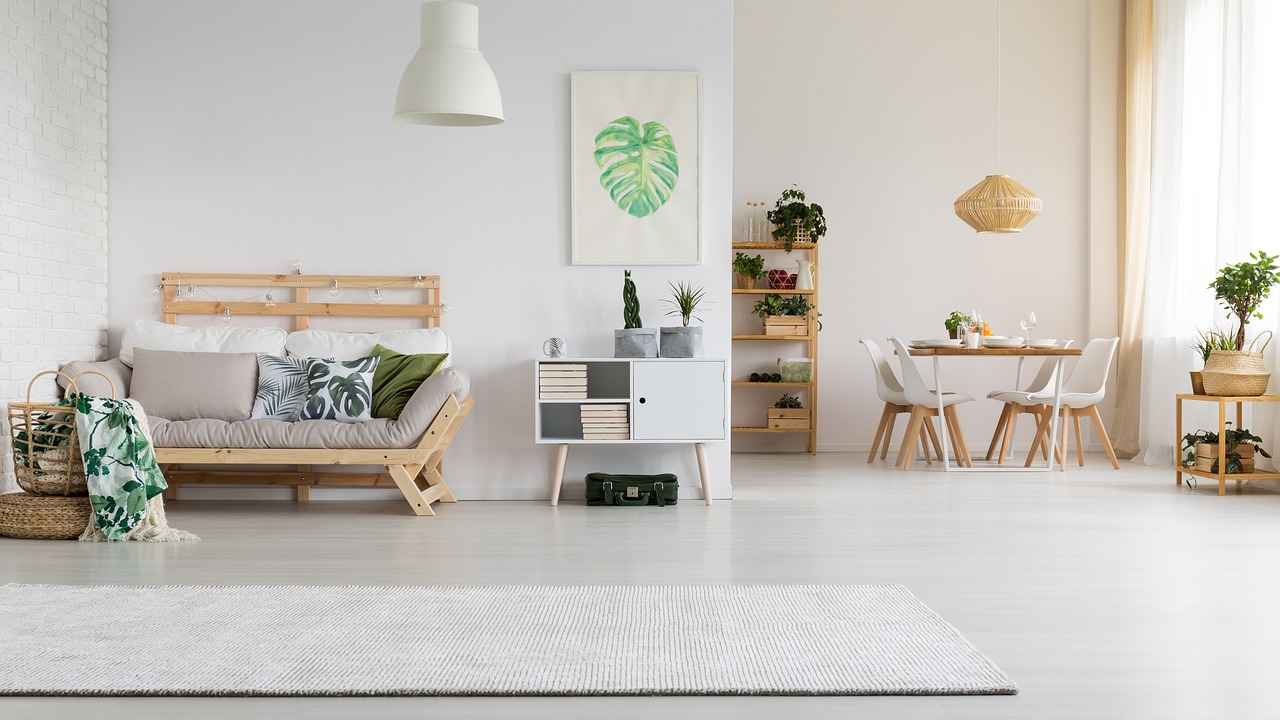
9. Incorporating Natural Light
Incorporating Natural Light into a small guest room is essential for creating a space that feels both larger and more inviting. Natural light not only enhances the aesthetic appeal of a room but also positively impacts the mood of its occupants. Here are some effective strategies to maximize natural light in your guest room:
- Utilize Large Windows: Opt for large windows or even floor-to-ceiling glass panels to allow maximum sunlight to flood the room. This creates an open and airy atmosphere.
- Choose Light-Colored Walls: Painting the walls in light shades such as whites, creams, or pastels can help reflect natural light, making the room feel brighter and more spacious.
- Install Skylights: If possible, consider adding skylights. They provide an excellent source of natural light and can make a small room feel more expansive.
- Use Reflective Surfaces: Incorporating mirrors and other reflective surfaces can amplify the natural light that enters the room. Strategically placing mirrors opposite windows can create a sense of depth and openness.
- Opt for Sheer Window Treatments: Light, airy curtains or blinds can help filter sunlight without blocking it out completely. This maintains privacy while still allowing brightness to enter.
By thoughtfully incorporating these elements, you can significantly enhance the brightness and openness of a small guest room. This not only improves the overall aesthetic but also creates a welcoming environment for your guests.
Conclusion: Natural light plays a crucial role in the design of small guest rooms. By implementing these strategies, you can transform your space into a bright and inviting retreat that your guests will appreciate.
9.1. Light Curtains
In the quest to create a welcoming atmosphere in small guest rooms, light and airy curtains play a pivotal role. These curtains not only enhance the aesthetic appeal of the room but also serve practical purposes that can significantly improve the overall guest experience.
By choosing sheer or lightweight fabrics, you can maximize natural light entering the room. This influx of sunlight can make the space feel larger and more inviting, contributing to a cheerful and bright ambiance. Moreover, light curtains can create a sense of openness, allowing the room to breathe and feel less cramped.
Importantly, while promoting brightness, these curtains offer a level of privacy that is essential for guests. They can filter outside views without completely blocking the light, ensuring that visitors feel secure and comfortable. This balance is crucial in a guest room, where relaxation and personal space are paramount.
When selecting light curtains, consider the following:
- Fabric Type: Opt for materials like linen, cotton, or polyester blends that are both lightweight and durable.
- Color Choices: Light colors such as whites, creams, or pastels can reflect sunlight and enhance the airy feel of the room.
- Length and Style: Floor-length curtains can add elegance, while shorter styles may suit a more casual vibe.
In conclusion, incorporating light curtains into your guest room design can transform the space, making it more inviting and comfortable. By allowing natural light to flood in while ensuring privacy, these curtains serve as a functional and stylish element that enhances the overall guest experience.
9.2. Mirrors for Reflection
Incorporating mirrors into your small guest room design can be a game changer. Not only do they serve a functional purpose, but they also play a significant role in enhancing the overall aesthetic and ambiance of the space. Strategically placing mirrors can reflect light and create the illusion of a larger area, making your guest room feel more open and inviting.
When considering mirror placement, think about the following:
- Opposite Windows: Positioning mirrors directly across from windows allows them to capture and reflect natural light, brightening the room.
- Accent Walls: A large mirror can serve as a stunning focal point on a feature wall, drawing the eye and adding depth to the room.
- Layering: Use smaller mirrors in clusters or alongside artwork to create a layered look that adds visual interest without overwhelming the space.
Moreover, mirrors can enhance the design elements of your guest room. For example:
| Mirror Type | Benefits |
|---|---|
| Framed Mirrors | Adds character and style, complements the room’s decor. |
| Full-Length Mirrors | Provides functionality for guests, making the room feel larger. |
| Decorative Mirrors | Acts as art pieces, enhancing the room’s overall aesthetic. |
In conclusion, the thoughtful integration of mirrors can significantly transform a small guest room. By reflecting light and creating the illusion of space, you can enhance not only the functionality but also the ambiance of the room, making it a welcoming retreat for your guests.
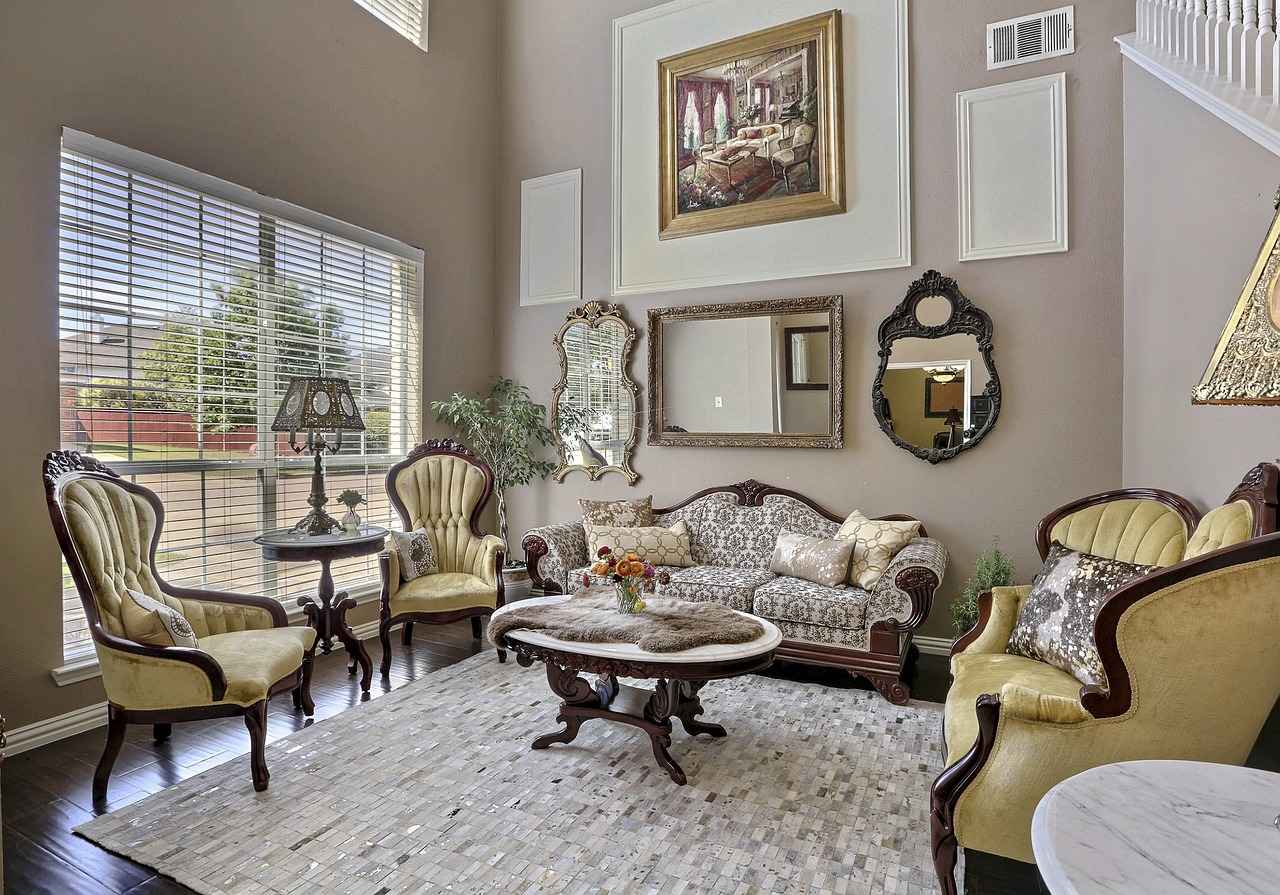
10. Personal Touches for Comfort
Creating a guest room that feels inviting and cozy is essential for ensuring that visitors enjoy their stay. One of the most effective ways to achieve this is by incorporating personal touches that reflect your style and make guests feel at home.
- Artwork and Decor: Adding artwork that resonates with your personal taste can significantly enhance the room’s atmosphere. Consider displaying pieces that reflect local culture or your own travels, as they can serve as great conversation starters.
- Thoughtful Amenities: Providing thoughtful amenities, such as extra pillows, plush blankets, and a selection of toiletries, can elevate the comfort level. These small details show your guests that you care about their experience.
- Personalized Welcome Notes: A handwritten note welcoming your guests can add a special touch. It can include tips about the area, Wi-Fi passwords, or simply a warm message to make them feel appreciated.
- Cozy Lighting: The right lighting can transform a space. Consider using warm-toned lamps or string lights to create a cozy ambiance that encourages relaxation.
- Books and Magazines: Providing a selection of books or magazines can give guests something to enjoy during their downtime. Choose titles that reflect your interests or local attractions.
- Personalized Bedding: Opt for bedding that reflects your style while ensuring comfort. Choose colors and patterns that create a cohesive look and feel inviting.
By implementing these personal touches, you can create a space that not only looks good but also feels like a warm and welcoming retreat for your guests. This thoughtful approach can leave a lasting impression, encouraging visitors to return.
10.1. Artwork and Decor
Artwork and decor play a crucial role in transforming a space, particularly in a small guest room. By incorporating elements that reflect your personal style, you can create an inviting atmosphere that makes guests feel right at home. Here are some key considerations for selecting artwork and decor:
- Choosing the Right Artwork: Opt for pieces that resonate with your personality. This could include paintings, prints, or photographs that evoke pleasant memories or convey a specific theme.
- Color Coordination: Ensure that the colors of your artwork complement the overall color scheme of the room. This creates a cohesive look that enhances the visual appeal.
- Framing and Presentation: Invest in quality frames that match the decor style. Whether it’s modern, vintage, or rustic, the right frame can elevate the artwork significantly.
- Wall Decor Options: Consider a gallery wall or a mix of different art forms, such as wall-mounted sculptures or tapestries, to add dimension and interest.
- Personal Touches: Incorporate personal items, such as family photos or souvenirs from travels, to make the space feel more intimate and welcoming.
Decor Accessories: Beyond artwork, decor accessories like cushions, throws, and rugs can add warmth and texture to the room. These elements can be used to introduce patterns or colors that tie the space together.
Lighting: Proper lighting can dramatically impact the ambiance. Consider using soft, warm lighting to create a cozy atmosphere. Accent lighting can highlight artwork and make the space feel more inviting.
In conclusion, carefully selected artwork and decor not only enhance the aesthetics of a small guest room but also contribute to a warm and welcoming environment. By reflecting your style through these elements, you ensure that your guests feel comfortable and at home during their stay.
10.2. Thoughtful Amenities
Creating a welcoming atmosphere in your guest room goes beyond just providing a comfortable bed. Thoughtful amenities can significantly enhance the overall experience of your guests, making their stay more enjoyable and memorable. Here are some essential amenities to consider:
- Extra Pillows: Providing a variety of pillows in different firmness levels allows guests to choose what suits their comfort best. Consider adding decorative pillows for aesthetics.
- Cozy Blankets: A soft, warm blanket can make a significant difference, especially during colder months. Opt for high-quality materials such as fleece or cotton to ensure comfort.
- Toiletries: Stocking the bathroom with essential toiletries such as shampoo, conditioner, body wash, and lotion shows guests that you care about their needs. Consider offering eco-friendly options to appeal to environmentally conscious visitors.
- Snacks and Beverages: Including a small selection of snacks and beverages, such as bottled water, tea, or coffee, can make guests feel more at home. A mini-fridge can be a great addition for longer stays.
- Personal Touches: A handwritten welcome note or a small gift, like local treats or a travel guide, can leave a lasting impression. Personal touches show guests that you value their presence.
These thoughtful amenities not only enhance comfort but also demonstrate your commitment to providing a positive experience. By anticipating the needs of your guests and offering these small luxuries, you can create a space that feels inviting and homely.
In conclusion, investing in thoughtful amenities is a simple yet effective way to elevate your guest room. These considerations can transform a basic accommodation into a memorable retreat, encouraging guests to return in the future.
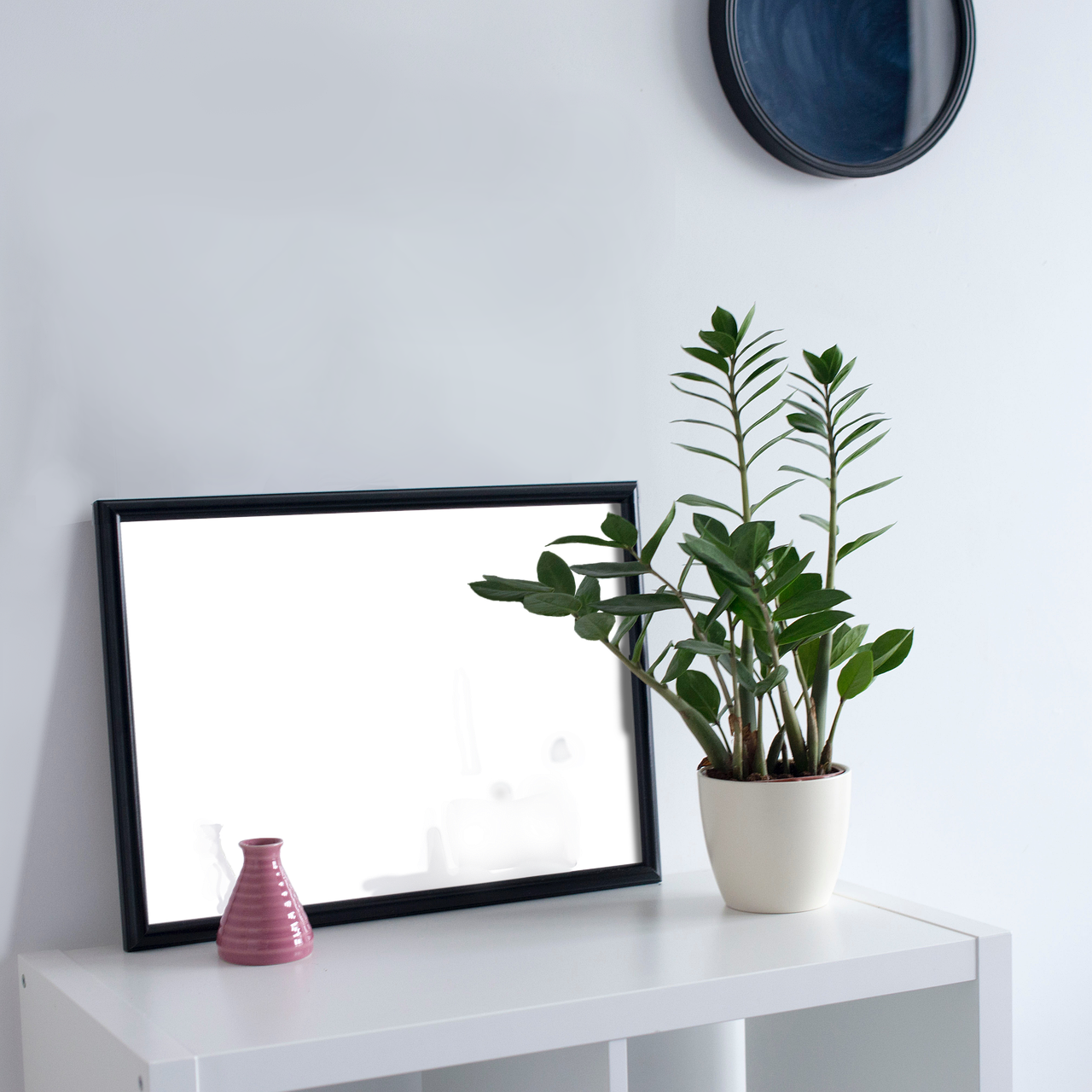
11. Seasonal Adjustments for Versatility
To create a welcoming and adaptable guest room, it’s essential to consider making seasonal adjustments to your design. By changing elements such as bedding, decor, and accessories throughout the year, you can keep the space feeling fresh and accommodating for every visitor.
- 11.1. Seasonal Bedding Changes: Switching out bedding based on the season can significantly enhance the comfort level of your guest room. For instance, in the winter months, opt for cozy flannel sheets and heavier comforters to create a warm atmosphere. In contrast, during the summer, lighter cotton sheets and breathable quilts can help keep guests cool and comfortable.
- 11.2. Decor Refreshes: Updating decor items seasonally can keep the room feeling vibrant and inviting. Consider incorporating seasonal colors and themes. For example, in autumn, warm hues like oranges and browns can be introduced through throw pillows and wall art, while spring can bring in pastel colors and floral patterns.
- 11.3. Accessory Swaps: Changing accessories such as rugs, curtains, and artwork can also contribute to a seasonal refresh. Lightweight, airy curtains can let in more natural light during spring and summer, while heavier drapes can provide insulation during colder months. Similarly, swapping out area rugs for thicker options can add warmth in winter.
- 11.4. Seasonal Scents: Don’t underestimate the power of scent in creating a welcoming environment. Use seasonal candles or diffusers to introduce inviting fragrances that correspond with the time of year, such as cinnamon in fall or fresh linen in spring.
- 11.5. Outdoor Elements: If your guest room has windows overlooking a garden or outdoor area, consider incorporating seasonal plants or flowers into the decor. This not only enhances the aesthetic but also brings a touch of nature indoors.
By implementing these seasonal adjustments, you can ensure that your guest room remains a comfortable and inviting retreat throughout the year. This attention to detail not only enhances the guest experience but also reflects your thoughtfulness as a host.
11.1. Seasonal Bedding Changes
Seasonal Bedding Changes play a crucial role in enhancing the comfort and ambiance of your guest room. By adapting your bedding to reflect the changing seasons, you not only create a more inviting atmosphere but also ensure that your guests enjoy a comfortable stay, regardless of the weather outside.
During the winter months, consider using heavier fabrics such as flannel or fleece. These materials provide warmth and coziness, making your guests feel snug during chilly nights. Opt for rich colors like deep reds or dark greens, which evoke a sense of warmth and festivity. Adding a plush throw blanket can also enhance the comfort level, giving guests the option to snuggle up while reading or watching TV.
As spring arrives, it’s time to lighten things up. Switch to breathable cotton or linen sheets in brighter, pastel colors. Floral patterns or light geometric designs can bring a refreshing and cheerful vibe to the room. Adding a lightweight quilt can offer just the right amount of warmth during those cool spring evenings.
In the summer, focus on staying cool. Use lightweight, moisture-wicking fabrics that promote airflow. Crisp white or light blue bedding can create a clean, airy feel. Incorporating a lightweight duvet or a simple cotton coverlet can keep the bed inviting without overheating your guests.
As autumn approaches, rich, earthy tones can create a cozy, inviting atmosphere. Switch back to heavier bedding options like a warm comforter or a soft duvet in shades of orange, brown, or burgundy. Layering different textures, such as knitted throws or decorative pillows, adds depth and comfort, making the room feel welcoming.
By making these seasonal adjustments to your bedding, you can ensure that your guest room remains a cozy retreat, tailored to the preferences and comfort of your visitors throughout the year. This simple yet effective strategy not only enhances the guest experience but also reflects your attention to detail and hospitality.
11.2. Decor Refreshes
Updating decor items seasonally is an excellent way to keep your guest room feeling vibrant and inviting. By refreshing the decor, you create an atmosphere that encourages guests to return, as they will appreciate the effort put into maintaining a cozy and appealing space. Seasonal updates can be as simple or elaborate as desired, depending on your personal style and budget.
One effective approach is to rotate decorative elements such as throw pillows, blankets, and wall art. For instance, during the fall, you might choose warm colors and textures like deep oranges and browns, while in the spring, light pastels and floral patterns can bring a fresh, airy feel. This not only enhances the room’s aesthetic but also aligns with the changing seasons, making your guests feel more connected to the time of year.
- Seasonal Bedding: Swap out heavier comforters for lighter quilts as the weather warms up. This ensures comfort and also allows for a change in color scheme.
- Wall Art Changes: Consider using removable wall decals or framed prints that can be easily swapped out to reflect seasonal themes, such as winter landscapes or summer beach scenes.
- Seasonal Accents: Incorporate seasonal flowers or plants to add a natural touch. For example, sunflowers in the summer or pine branches in the winter can enhance the room’s ambiance.
Additionally, lighting can play a crucial role in the overall feel of the room. Using different lampshades or light bulbs that emit warmer or cooler tones can drastically change the atmosphere, making it more inviting during colder months or bright and cheerful in the summer.
In conclusion, by updating decor items seasonally, you not only keep the room feeling fresh and engaging but also show your guests that you care about their experience. This attention to detail can make all the difference, encouraging them to return time and again.
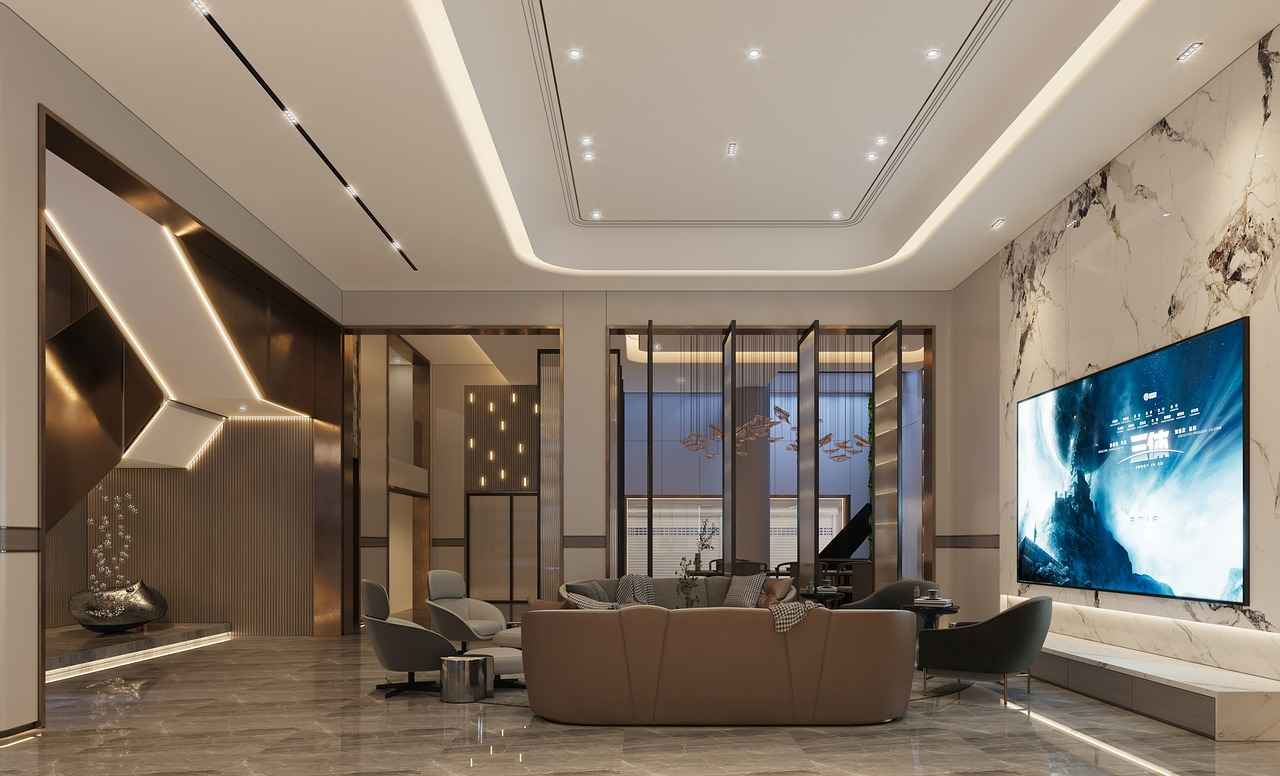
12. Conclusion: Designing the Perfect Small Guest Room
Designing a small guest room that is both functional and inviting can be a rewarding challenge. With careful planning and a touch of creativity, you can transform a compact space into a cozy retreat for your visitors. Here are some innovative ideas to help you create an inviting atmosphere while maximizing functionality.
- Choose a Focal Point: Start by selecting a focal point for the room, such as a stylish bed or a unique piece of artwork. This can set the tone for the entire space.
- Utilize Smart Storage: Incorporate furniture that doubles as storage, like ottomans or beds with drawers. This keeps the room organized and clutter-free.
- Light and Airy Colors: Opt for a light color palette to make the room feel more spacious. Soft whites, pastels, and light grays can enhance natural light.
- Layered Lighting: Use a combination of ambient, task, and accent lighting to create a warm and welcoming environment. Consider bedside lamps and wall sconces for added warmth.
- Personal Touches: Add personal touches like fresh flowers, books, or framed photos to make the space feel more inviting and homely.
Incorporating these elements will not only enhance the aesthetics of your small guest room but also ensure that your guests feel comfortable and at home. Remember to keep the layout open and functional, allowing for easy movement and accessibility. By focusing on both design and practicality, you can create a small guest room that is a true haven for visitors.
Conclusion: A well-designed small guest room can leave a lasting impression on your visitors. With thoughtful planning and creativity, you can create a space that is not only functional but also inviting, ensuring that your guests enjoy their stay.
Frequently Asked Questions
- What is a Murphy bed and how does it work?
A Murphy bed is a space-saving bed that can be folded up against the wall when not in use. This design allows you to free up floor space for other activities, making it an excellent choice for small guest rooms.
- Are daybeds comfortable for overnight guests?
Absolutely! Daybeds can be quite comfortable, especially when paired with the right cushions and bedding. They serve dual purposes as both a bed and a seating area, making them a stylish and functional addition to your guest room.
- What are the advantages of lofted beds?
Lofted beds elevate the sleeping area, creating extra floor space underneath that can be utilized for a desk, storage, or additional seating. This design is perfect for maximizing space in small guest rooms.
- How do I choose the right foldable bed?
When selecting a foldable bed, consider factors like comfort, support, and ease of setup. Options like rollaway beds and inflatable mattresses can be great choices, depending on your guest room needs.
- What should I consider for a custom built-in bed?
With a custom built-in bed, you have the flexibility to design it according to your space and style. Incorporating shelves and storage can enhance functionality, while professional installation ensures safety and aesthetic appeal.
